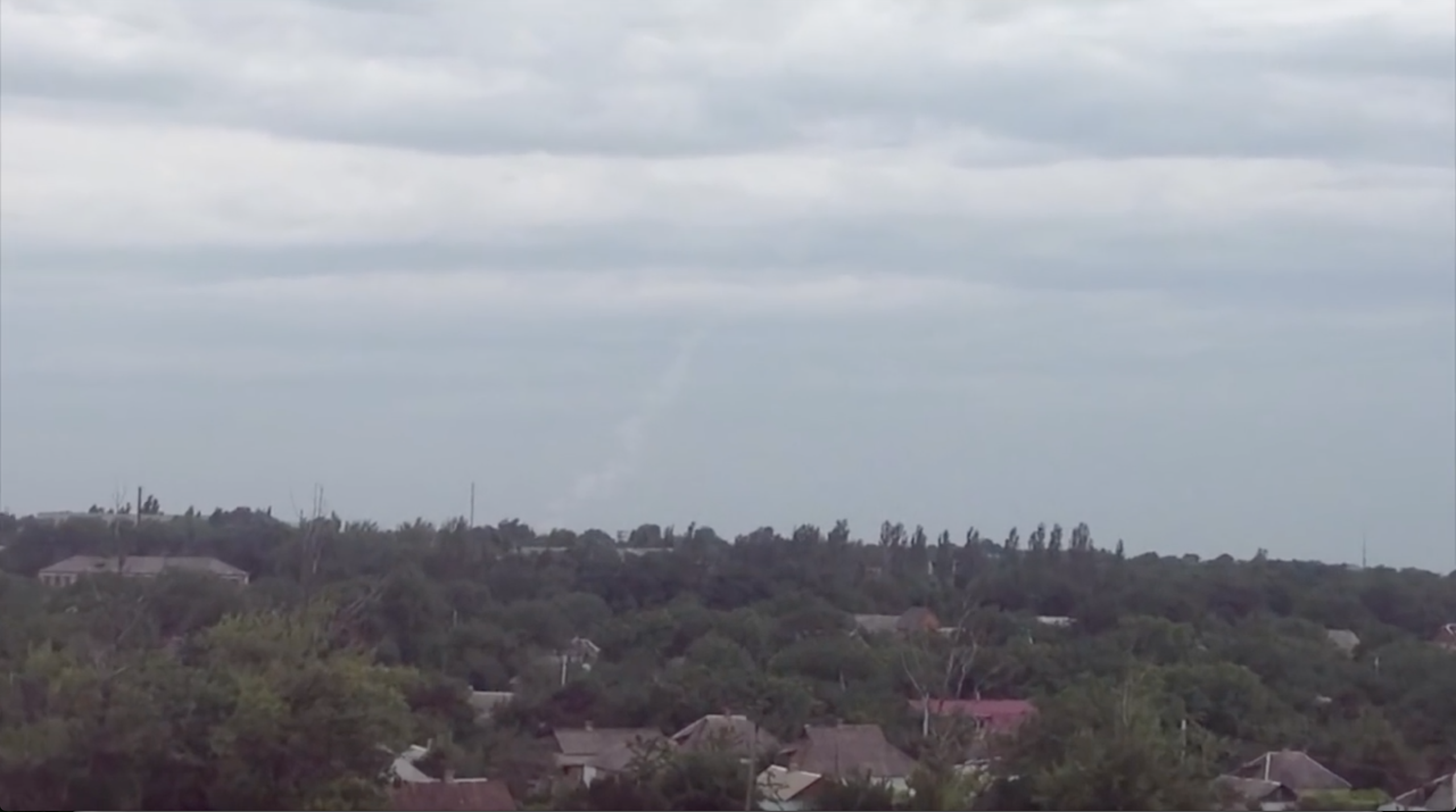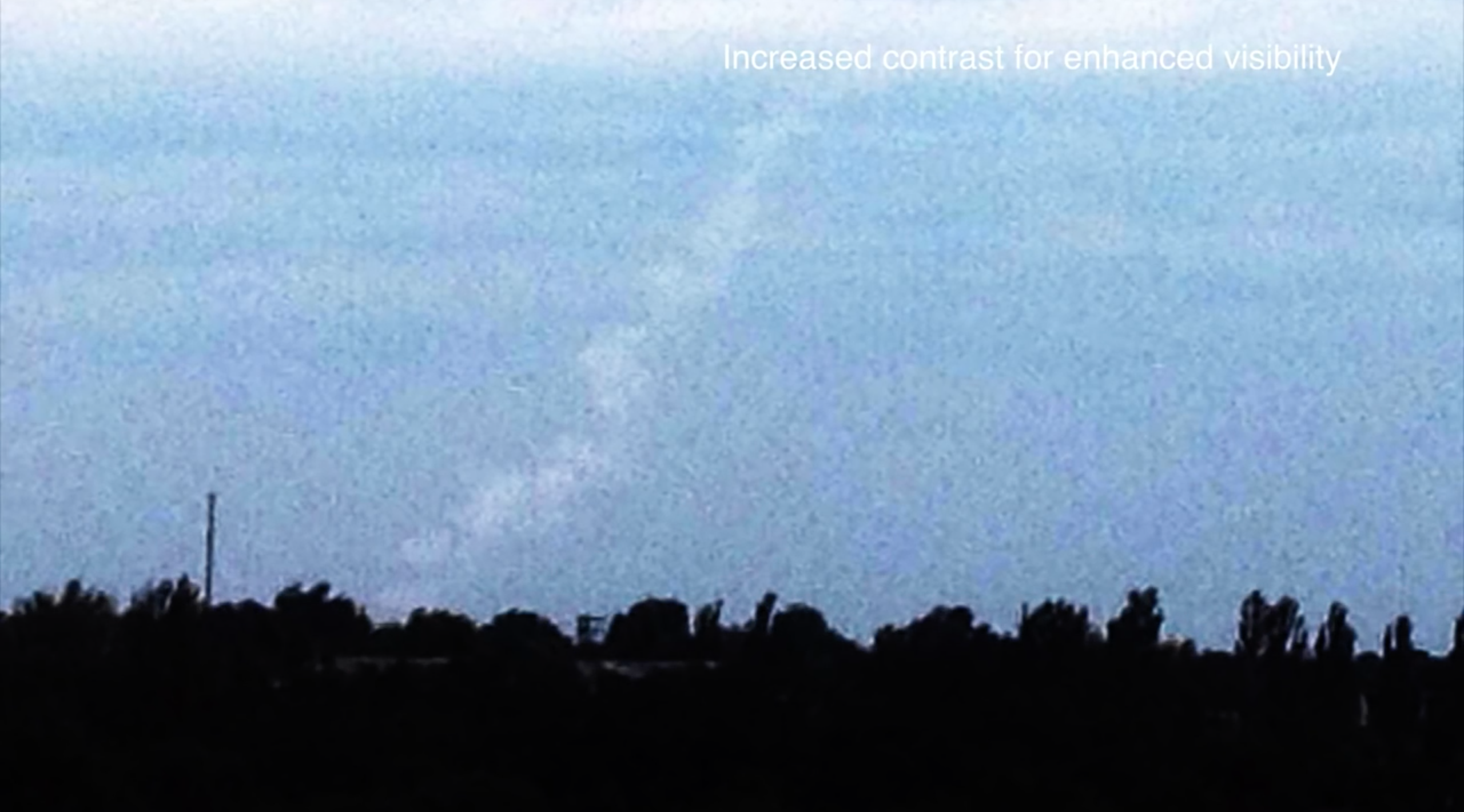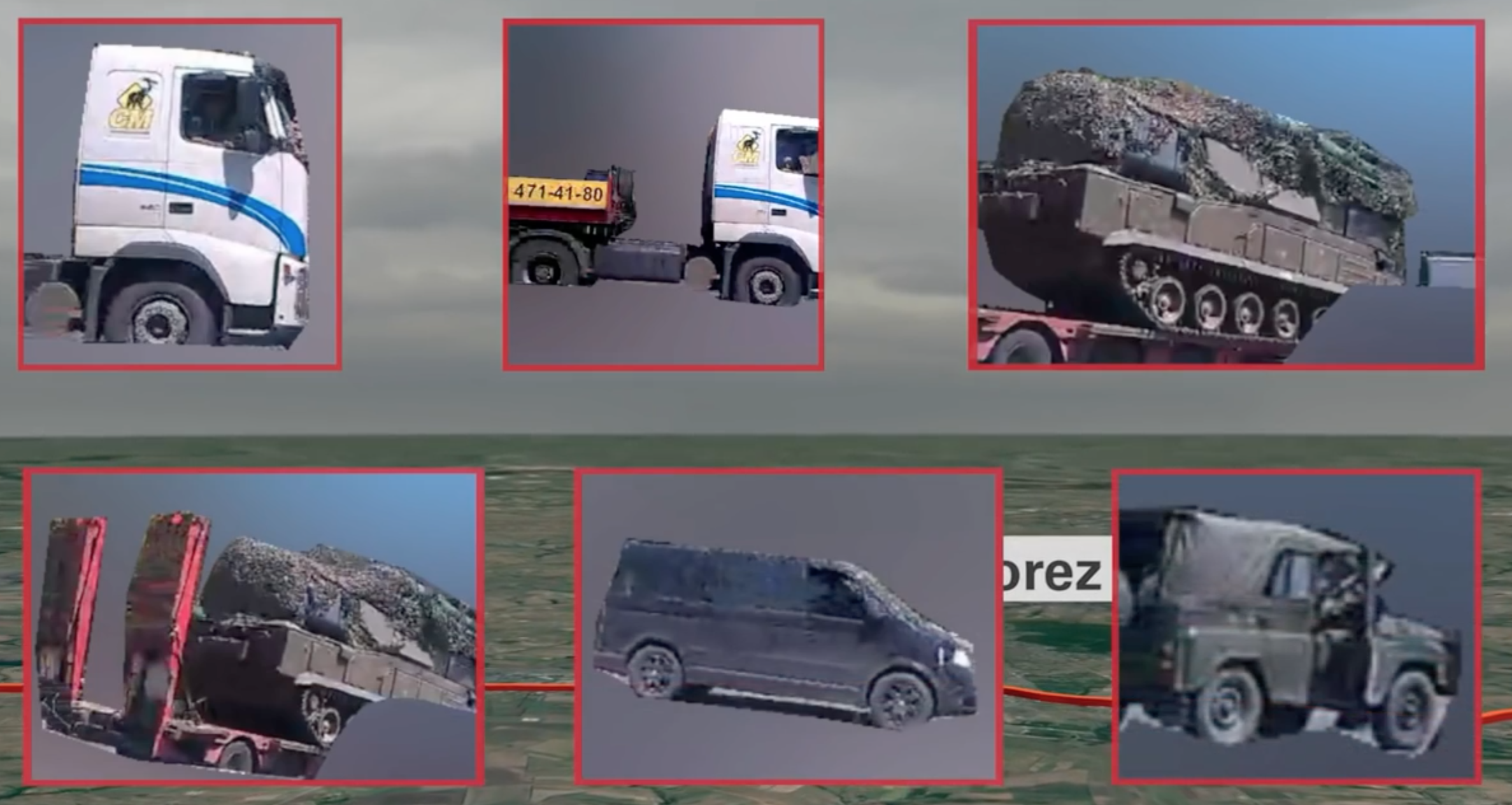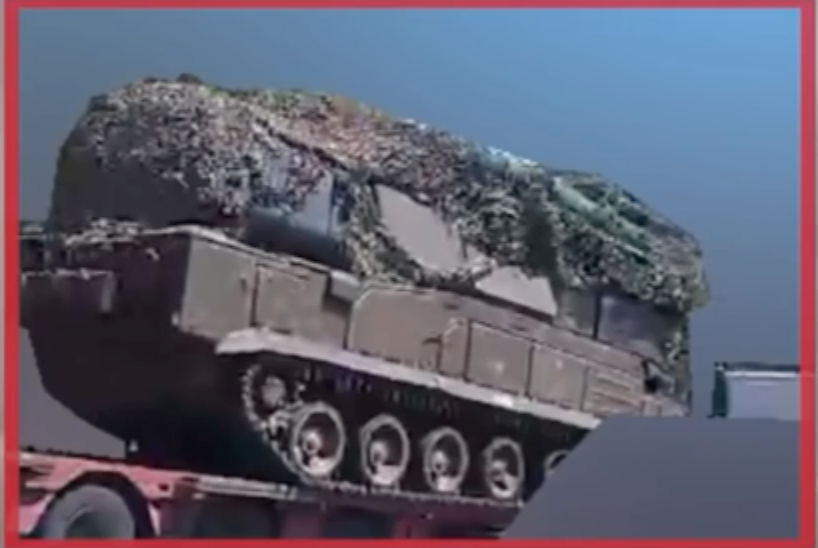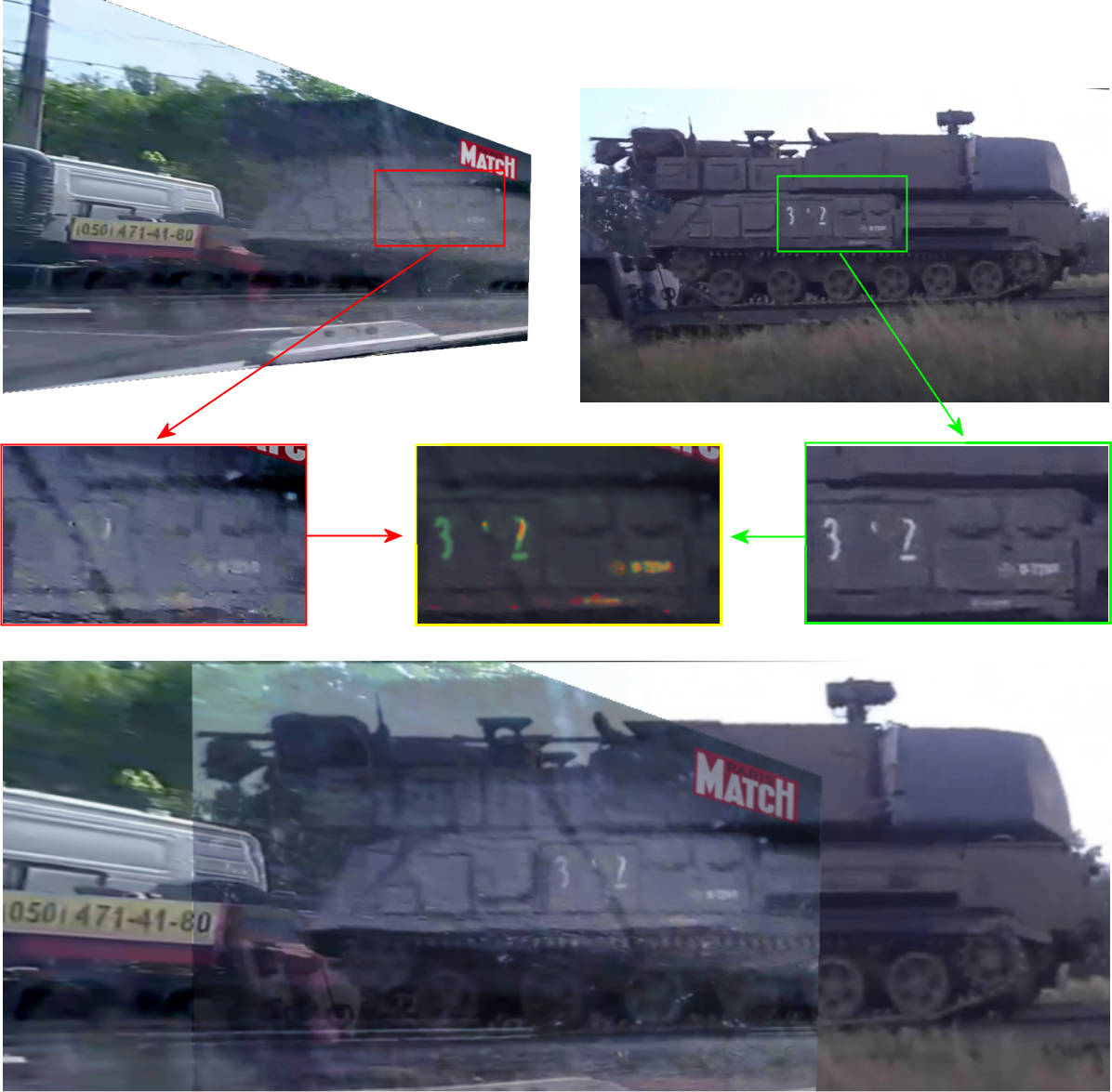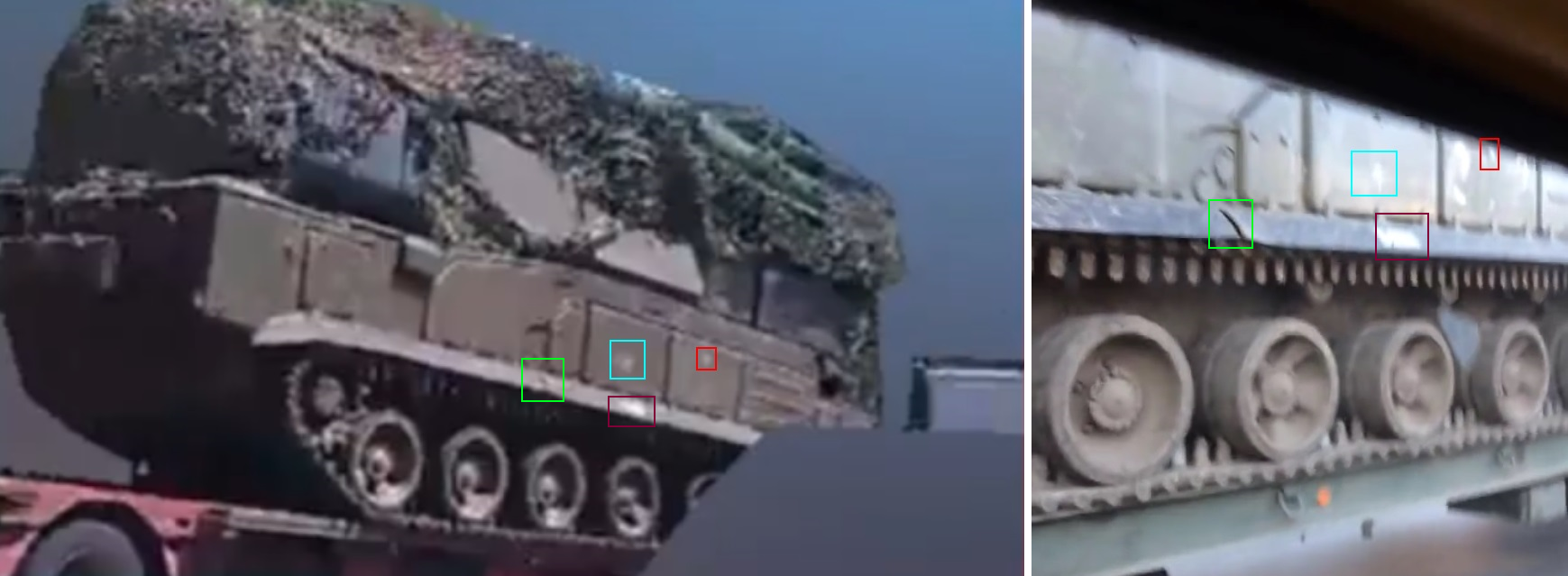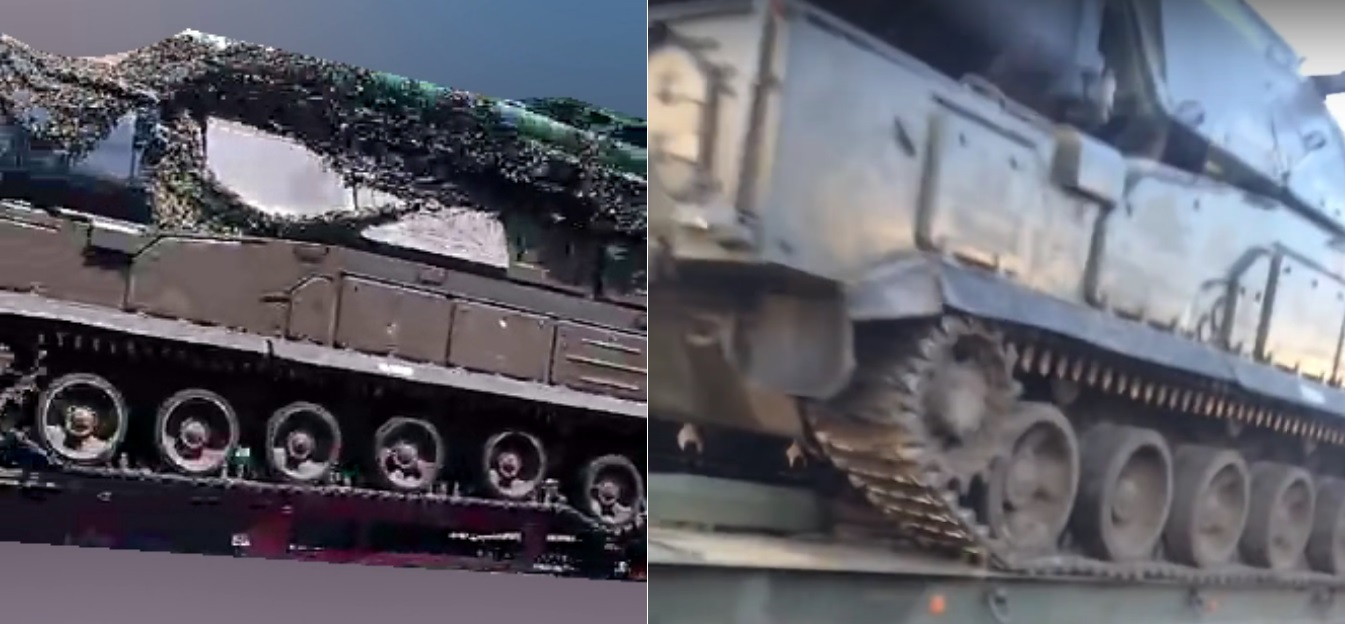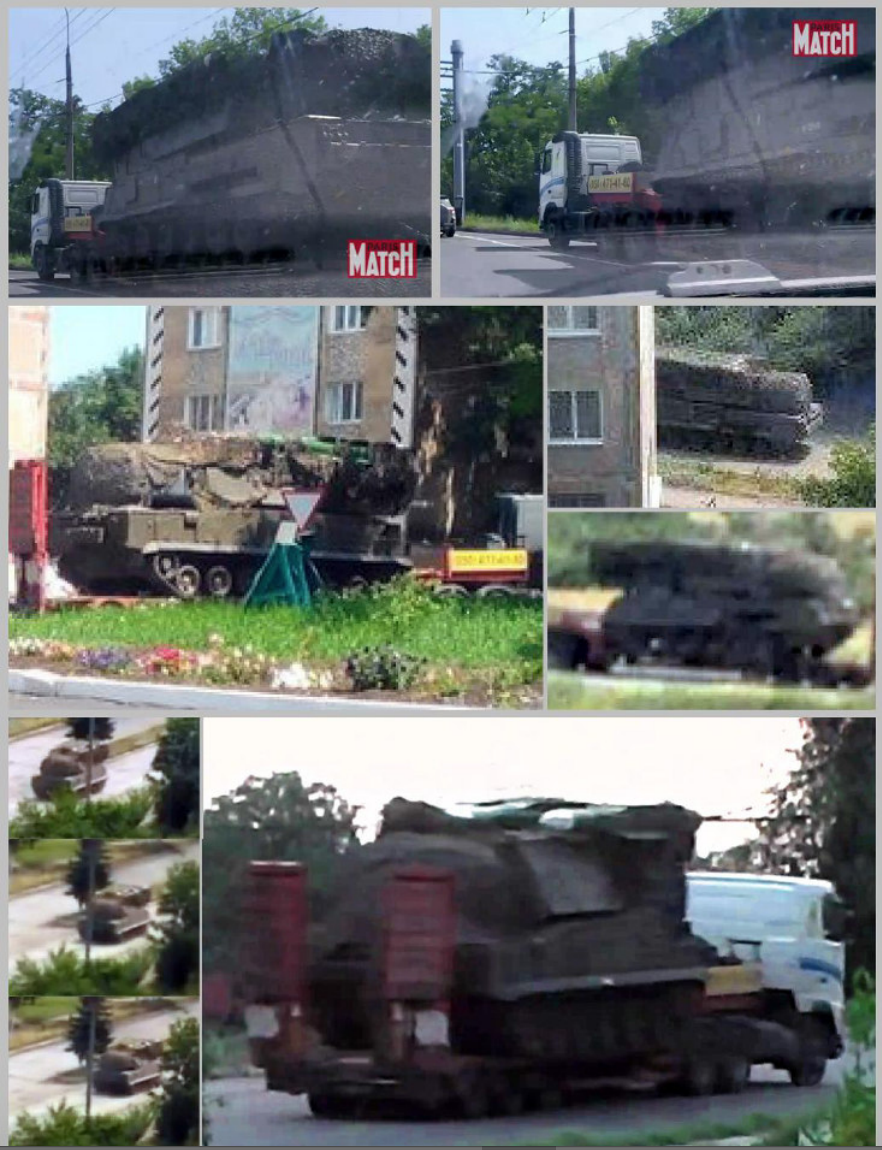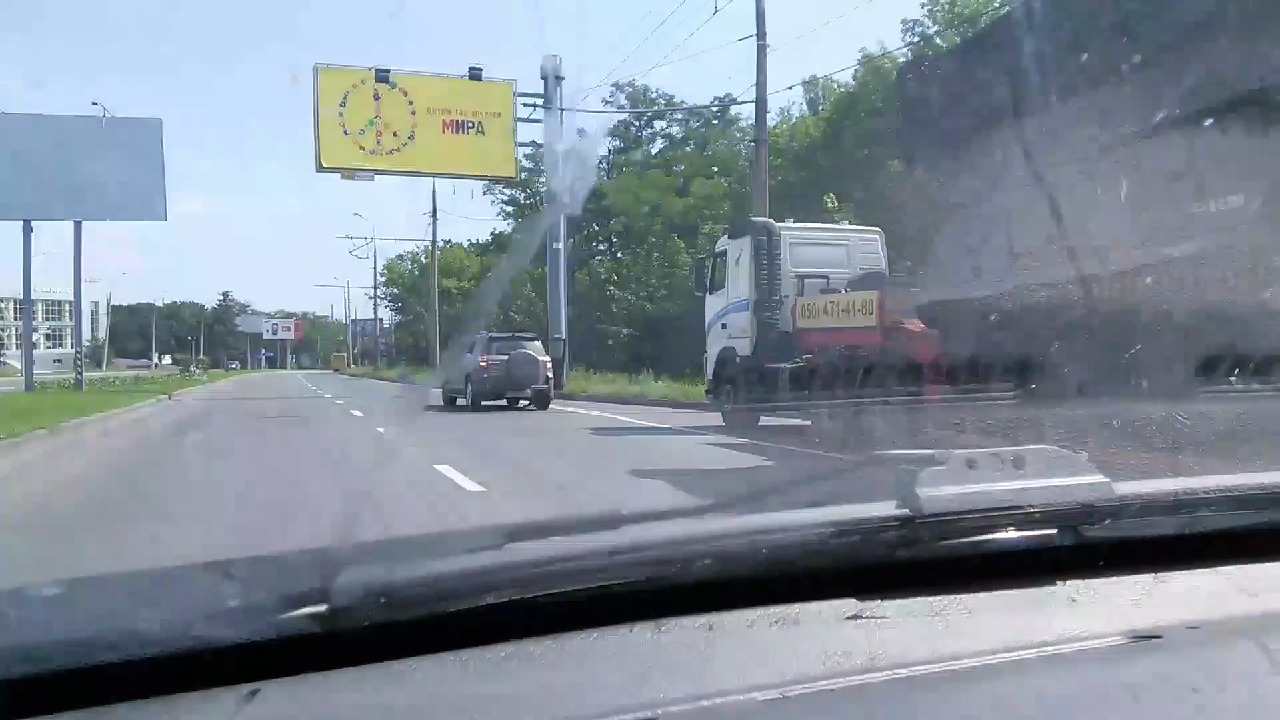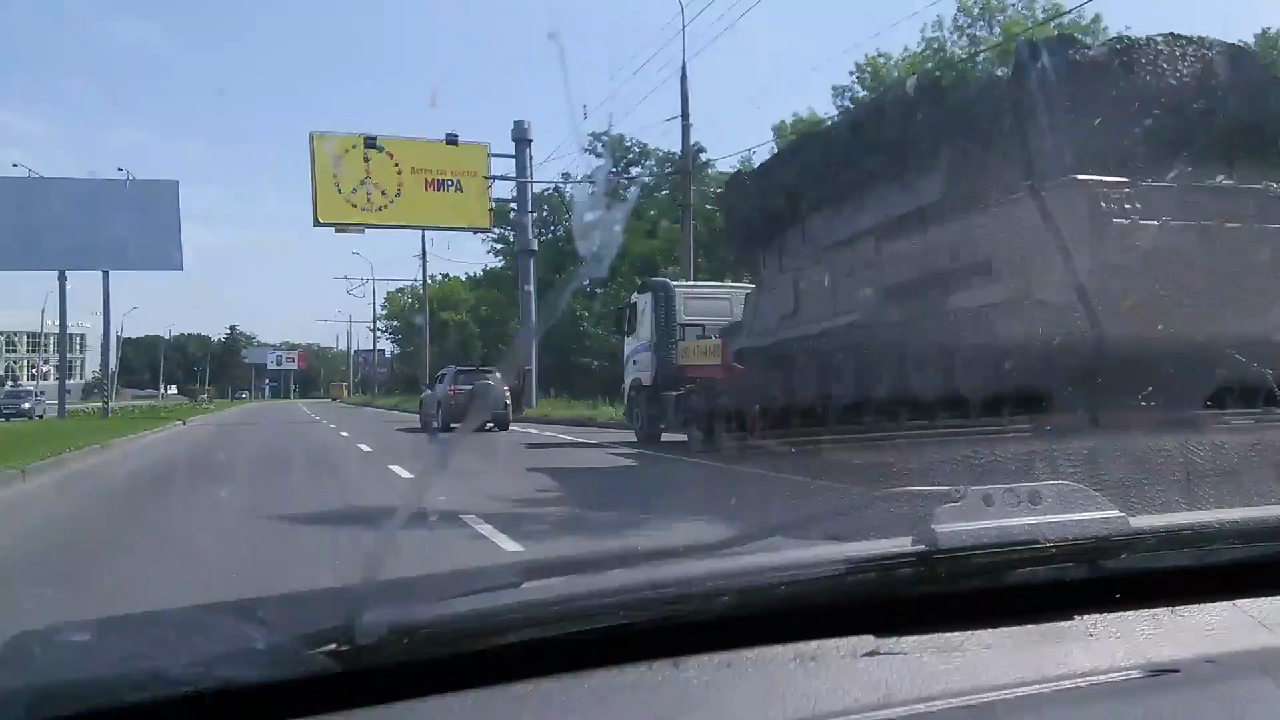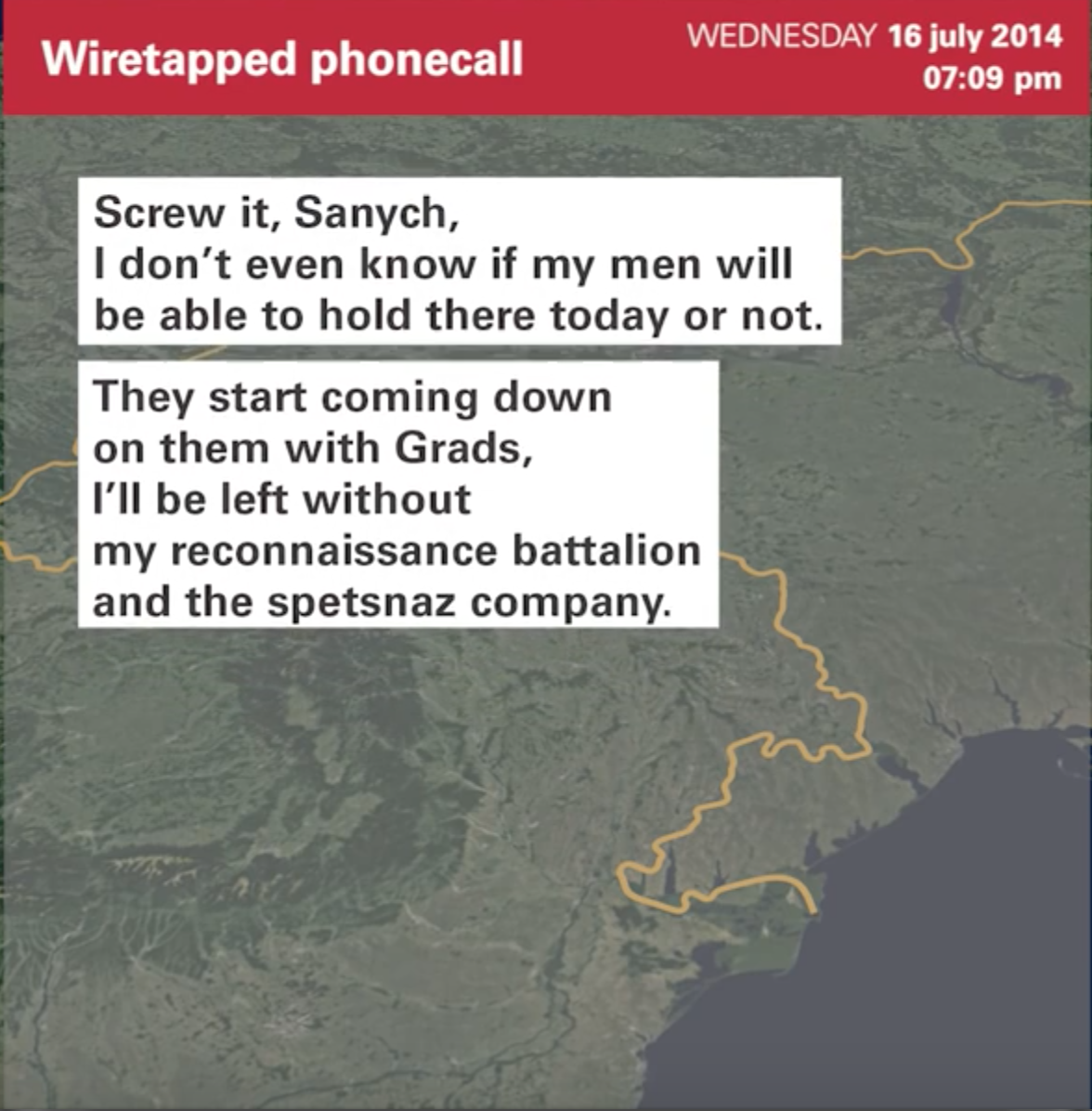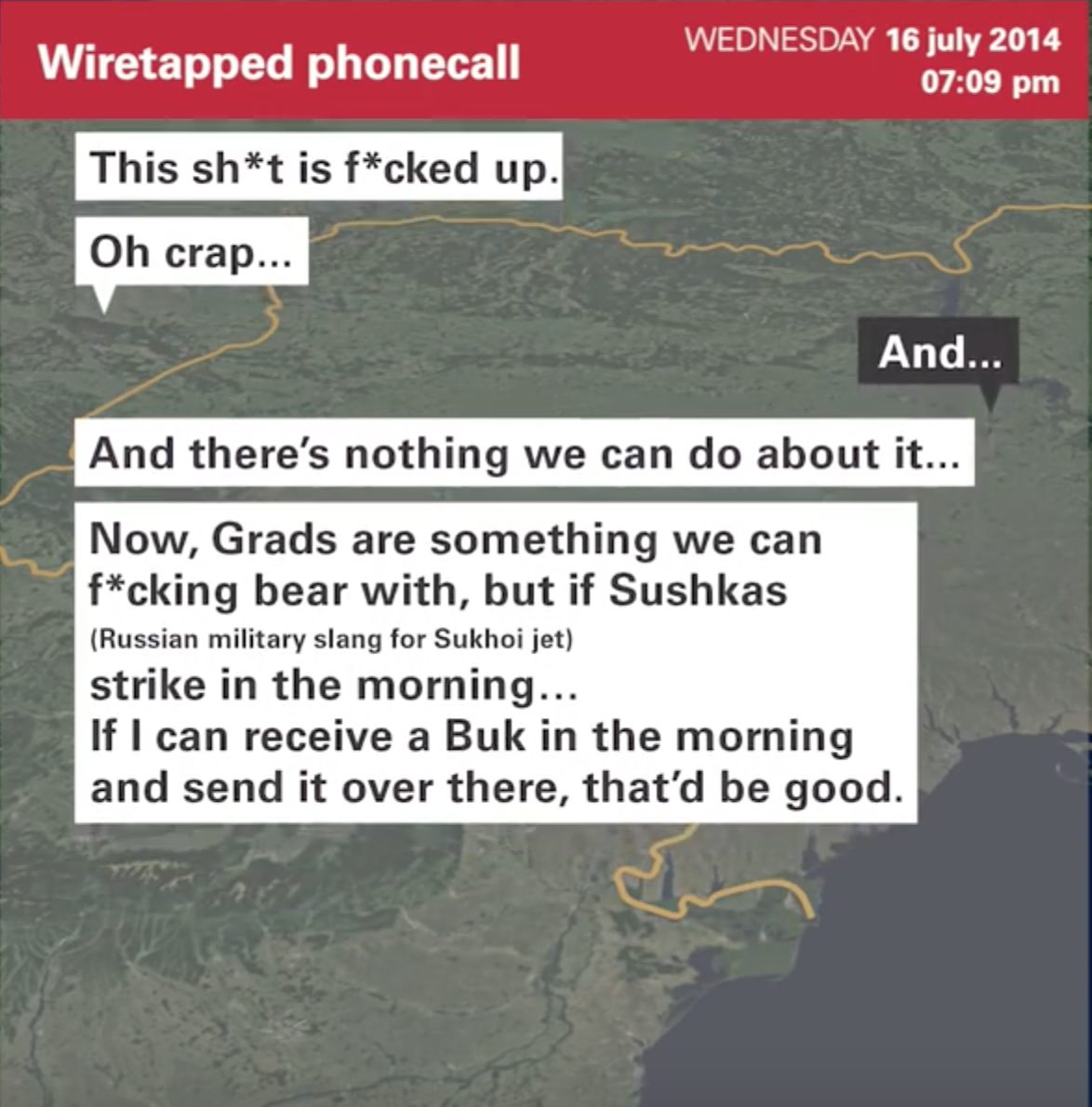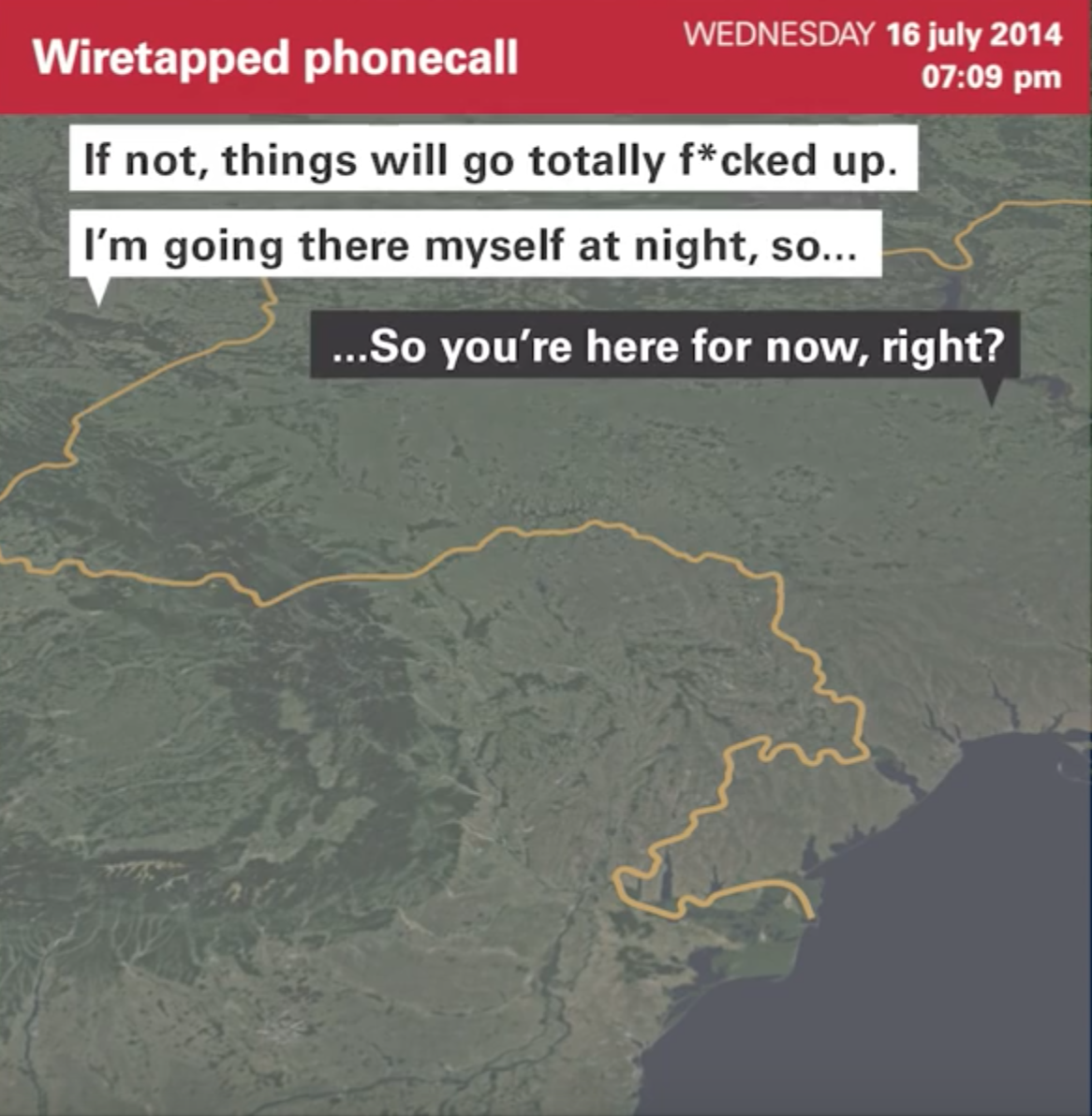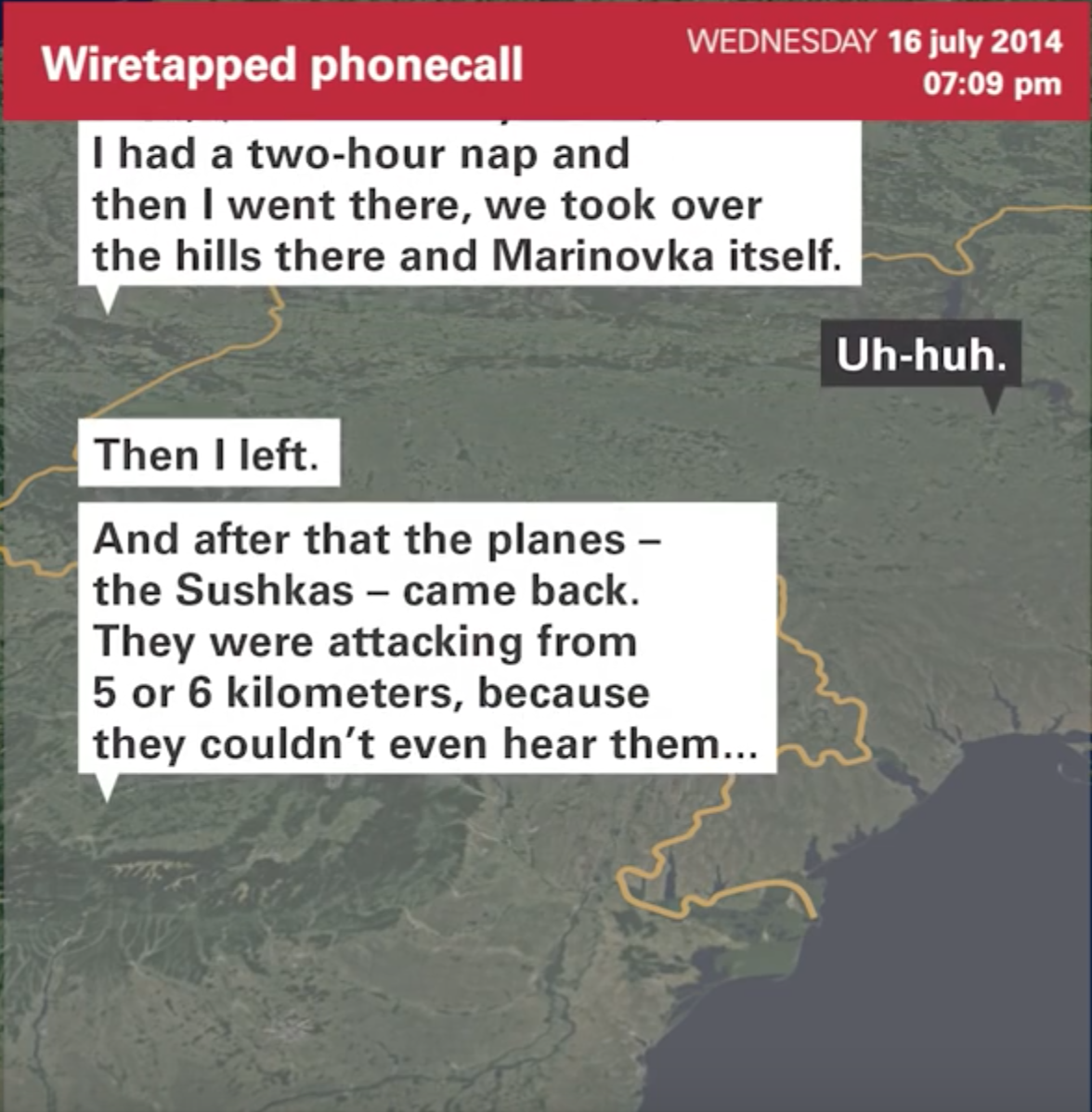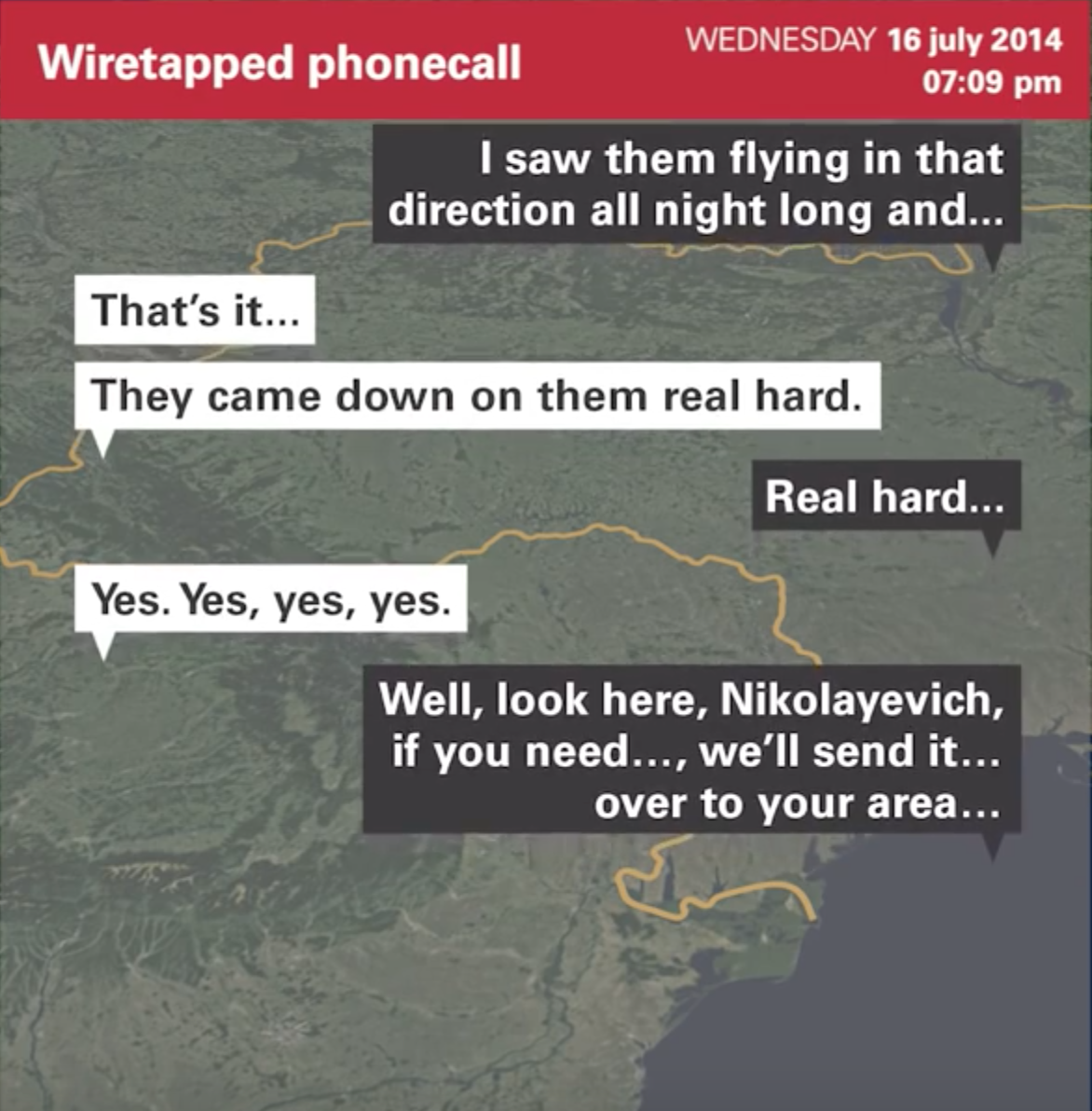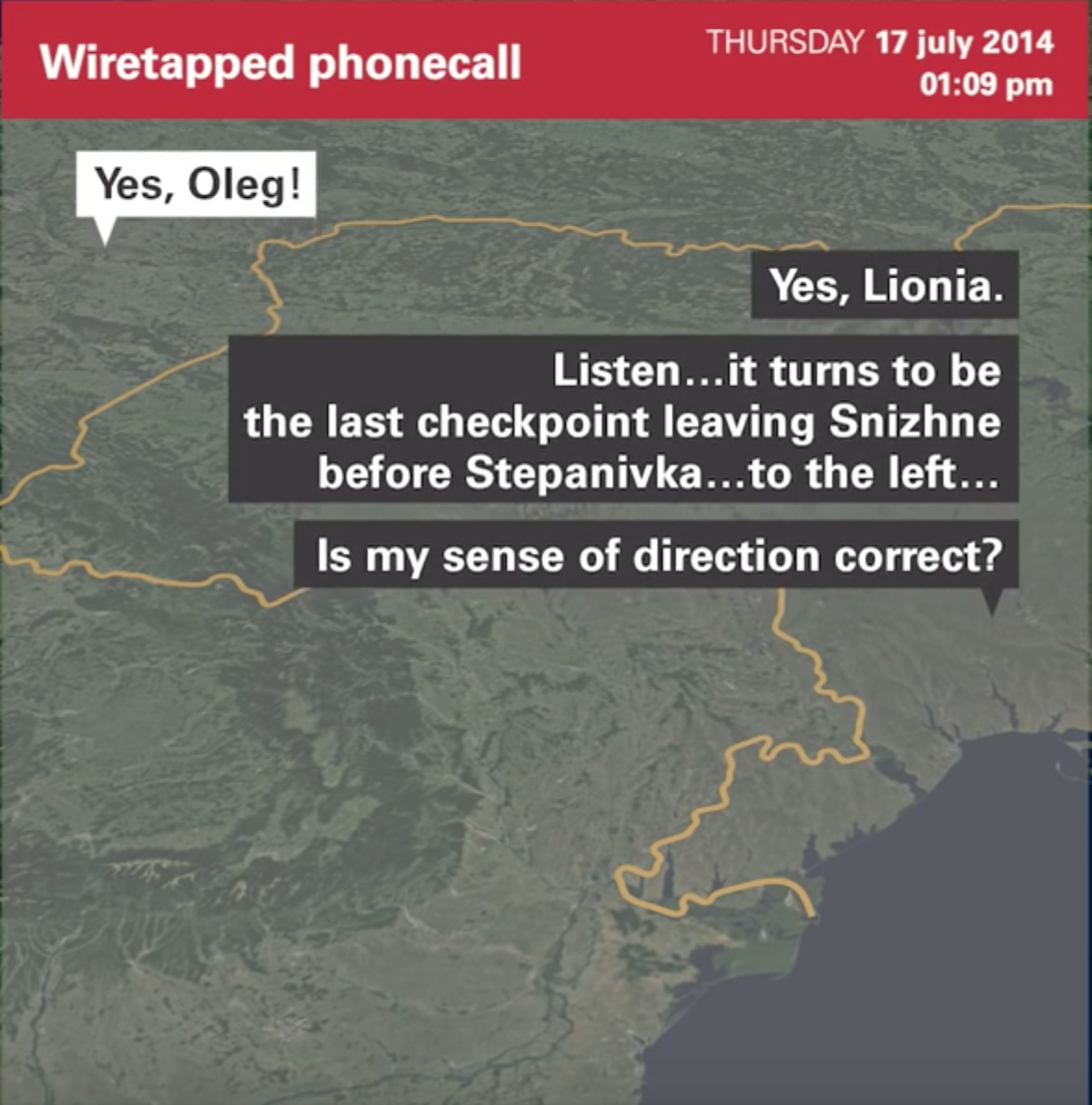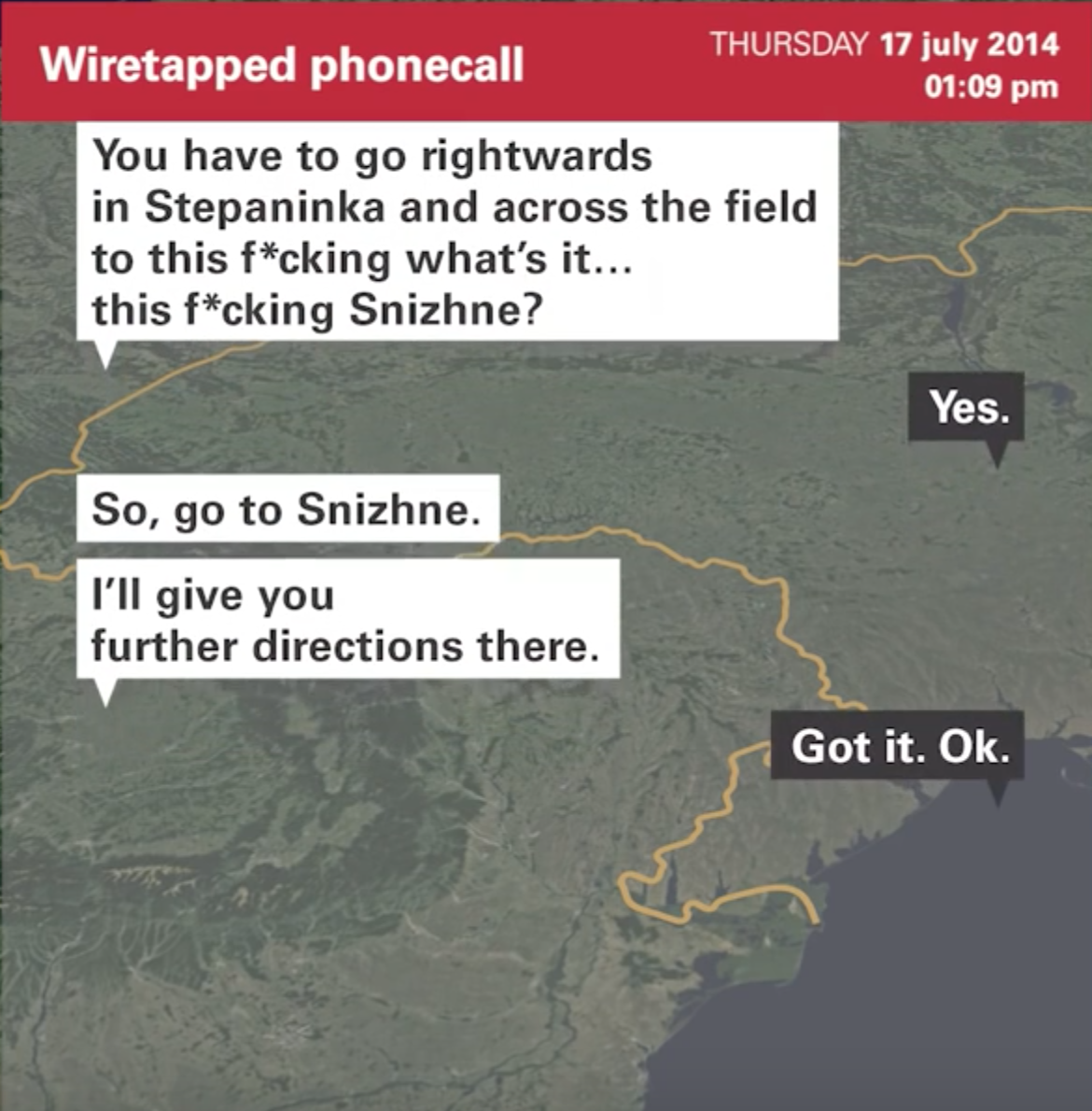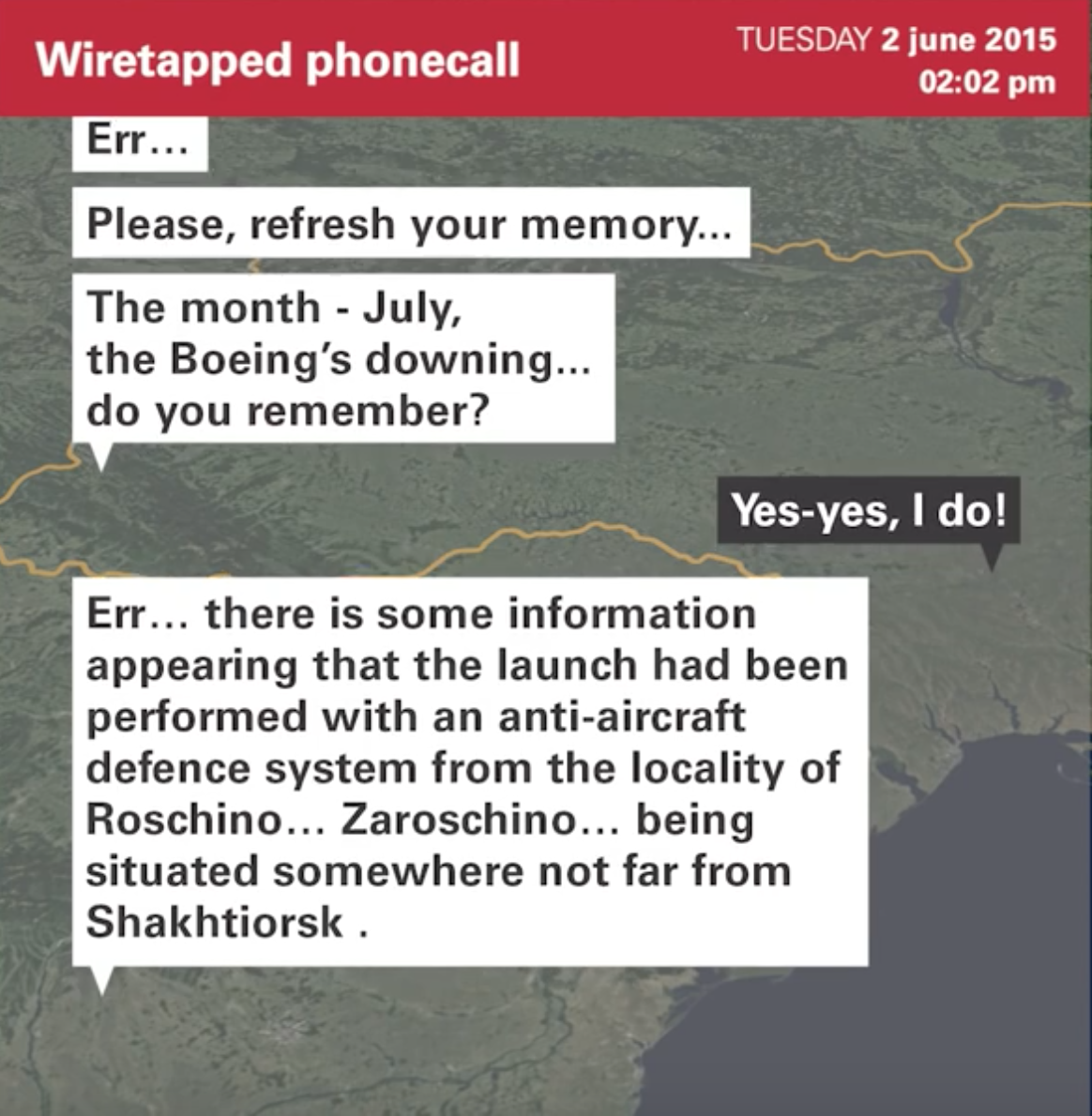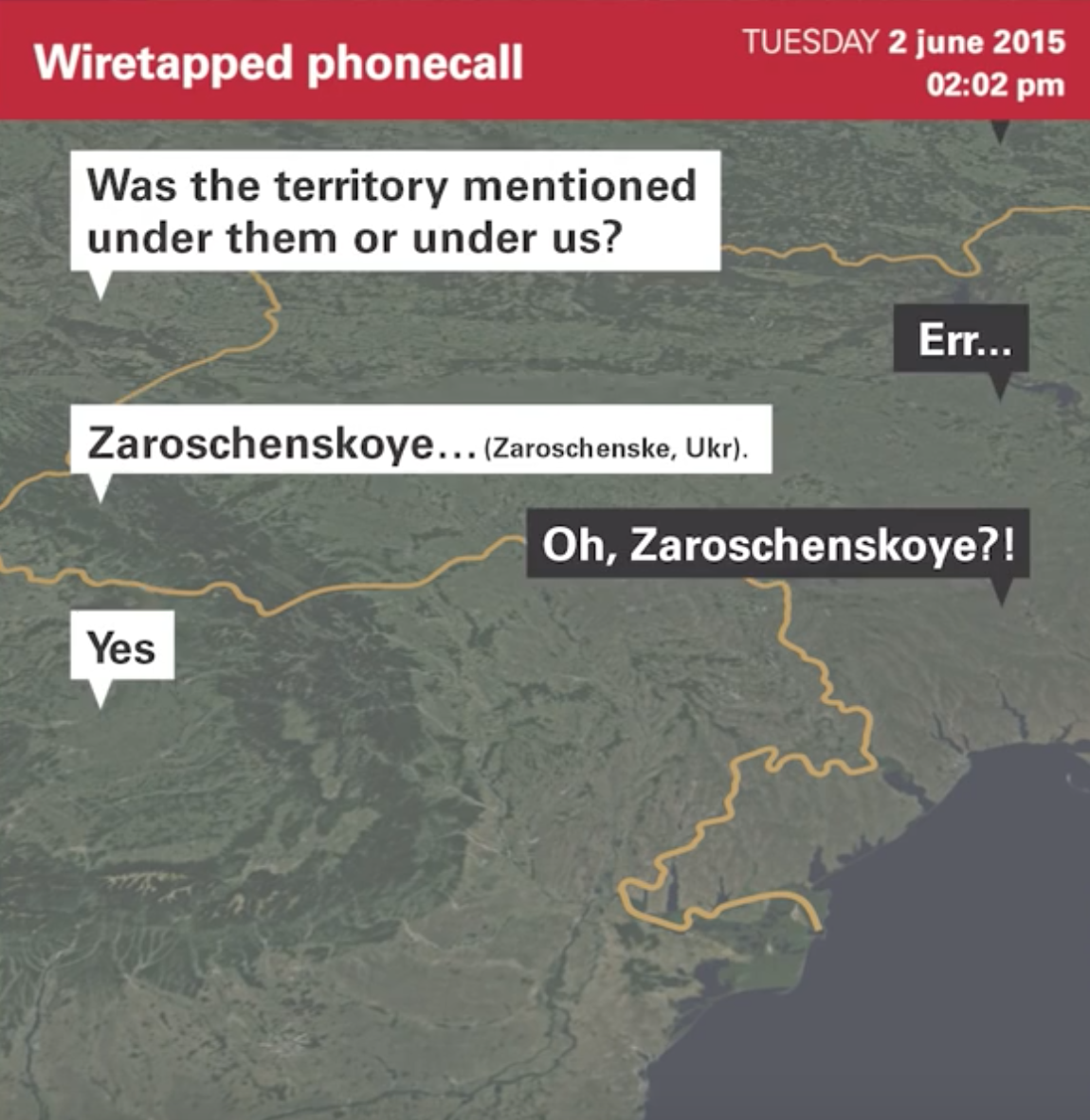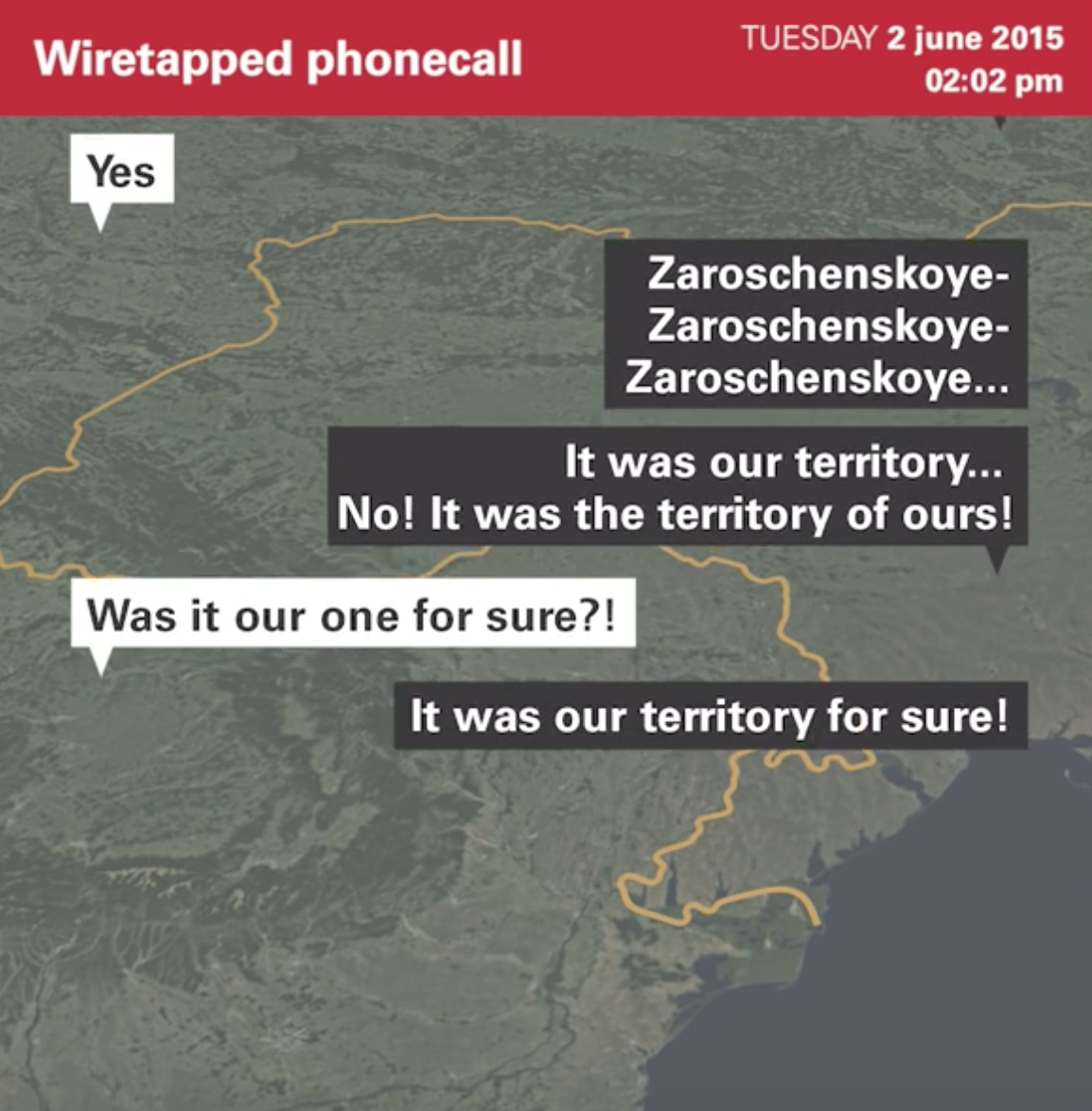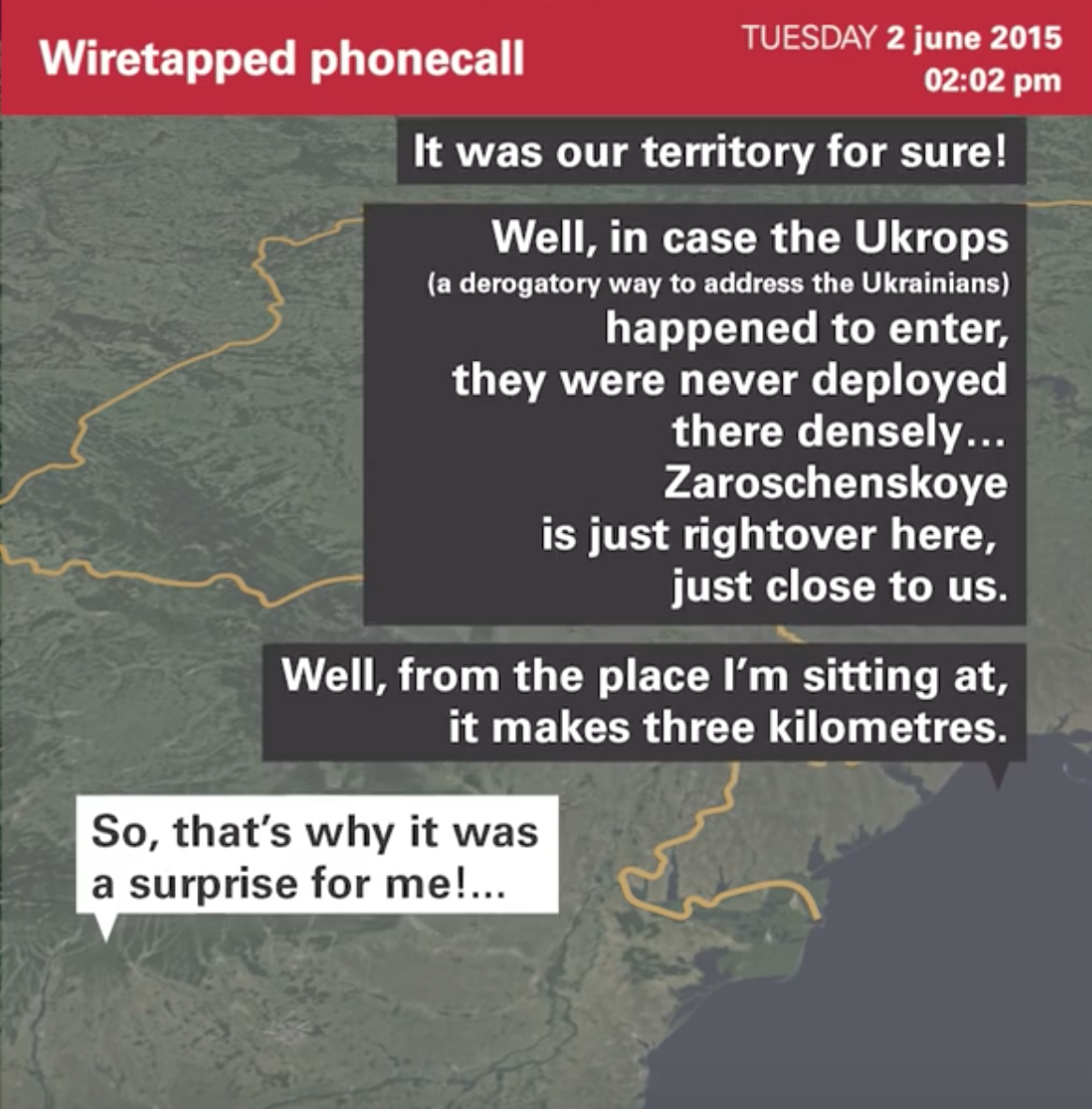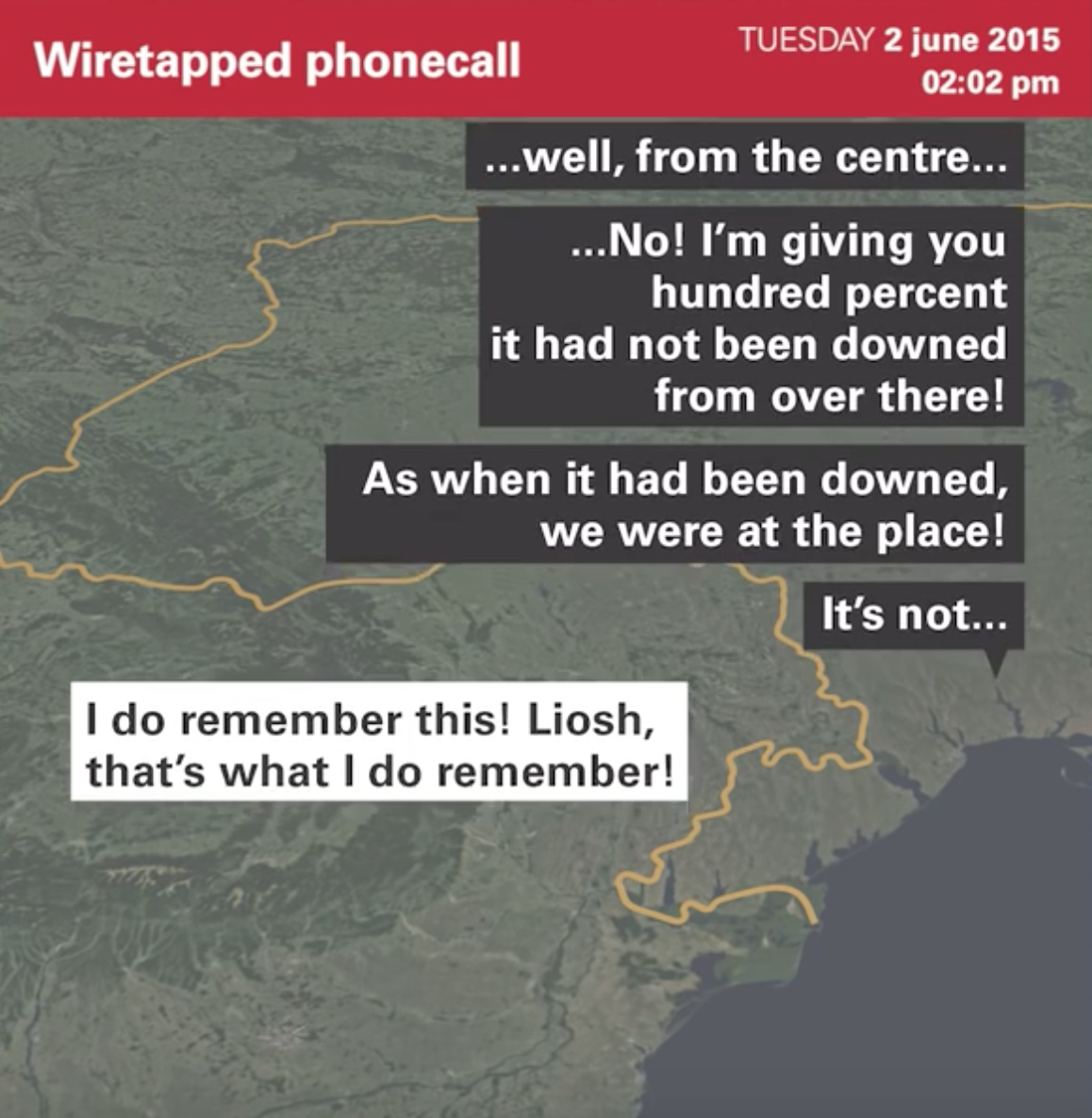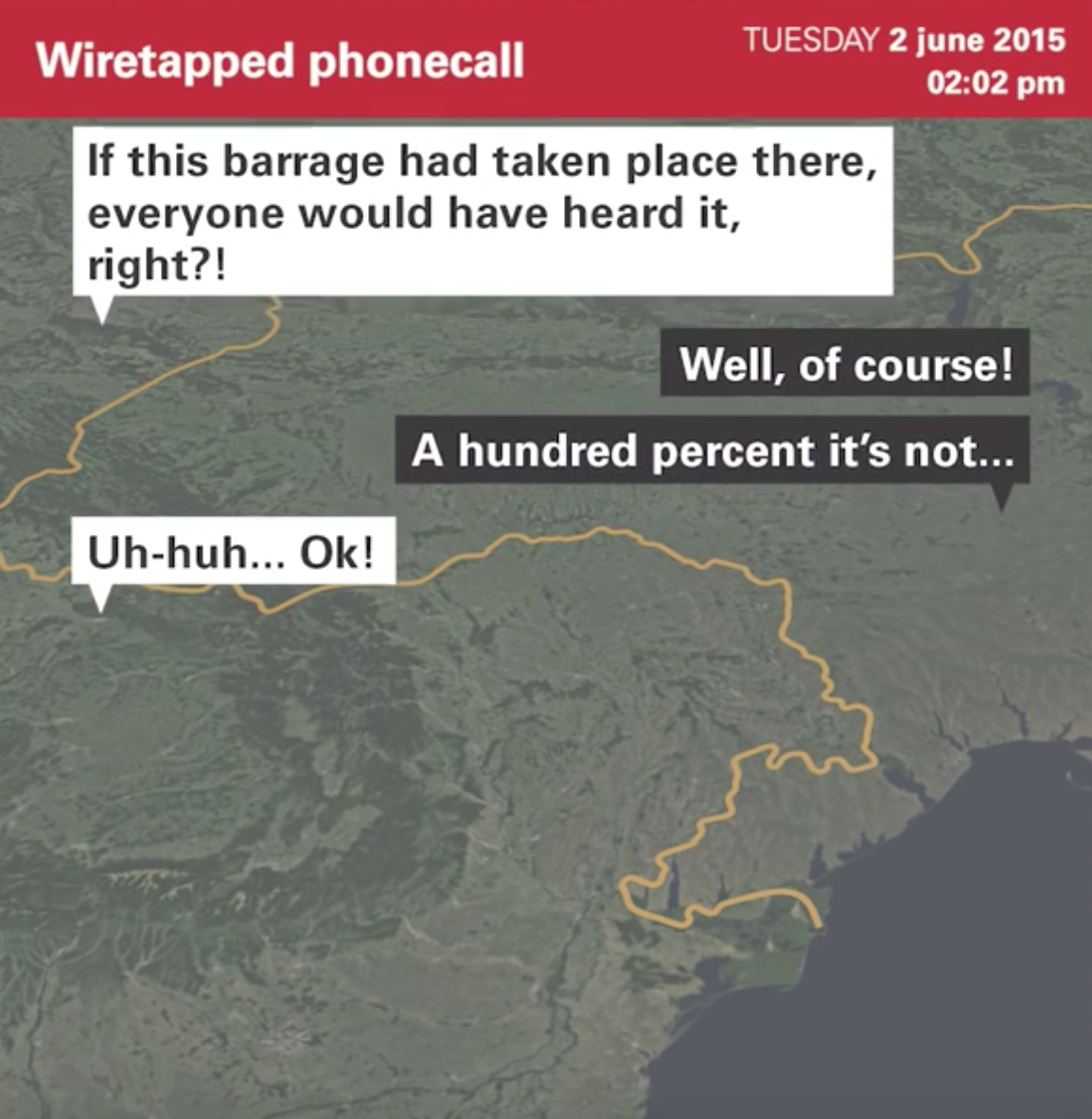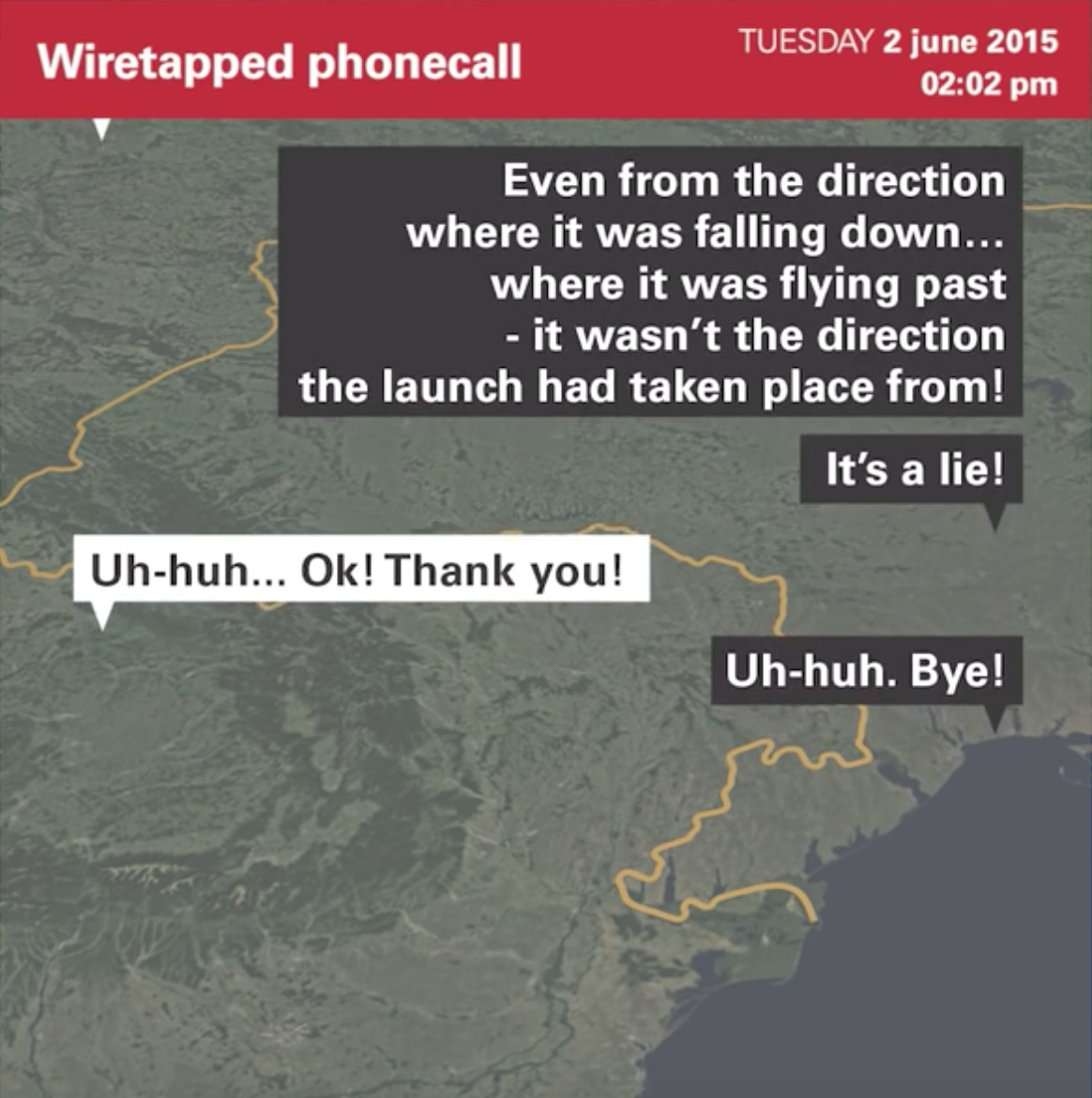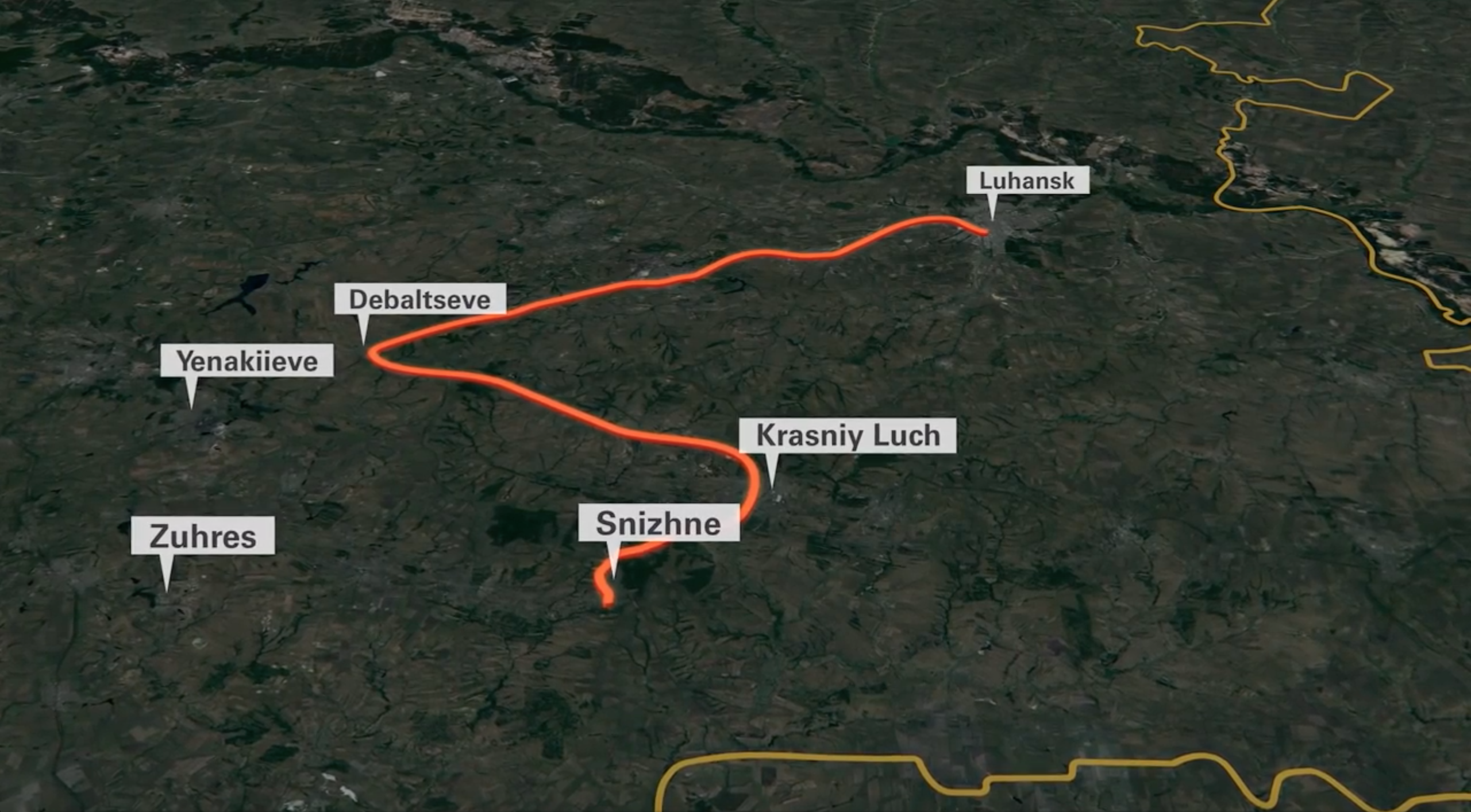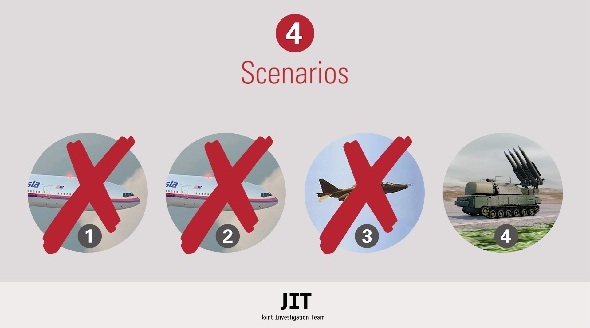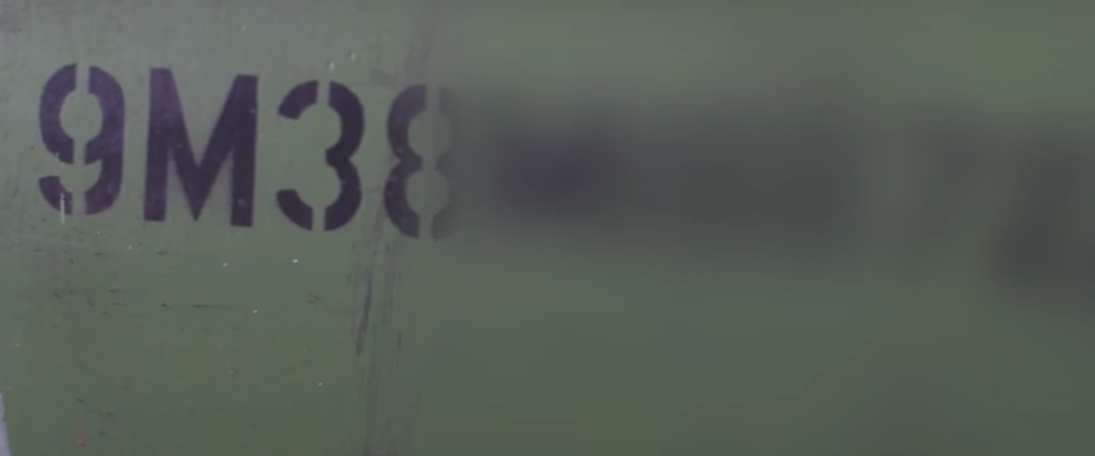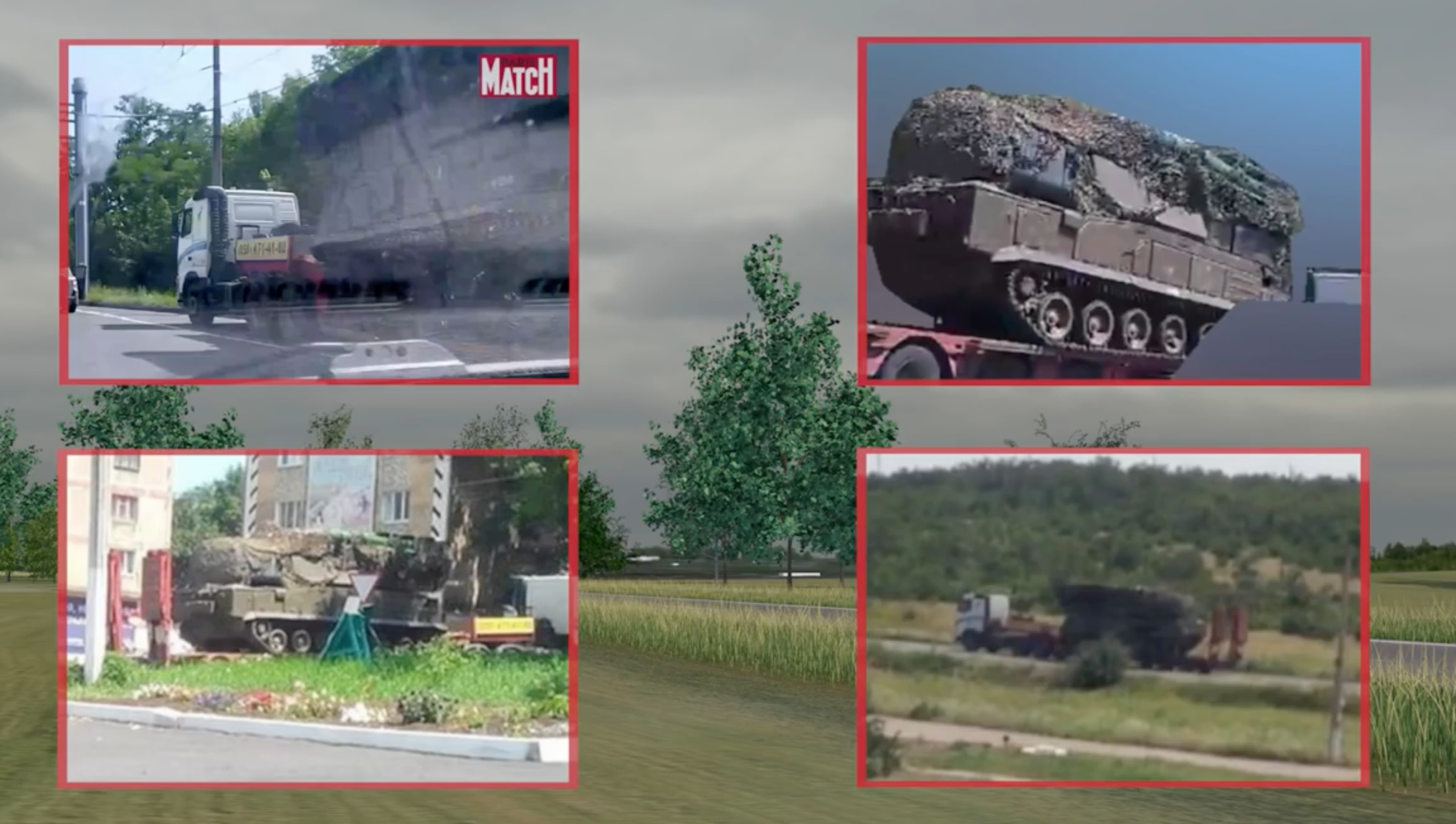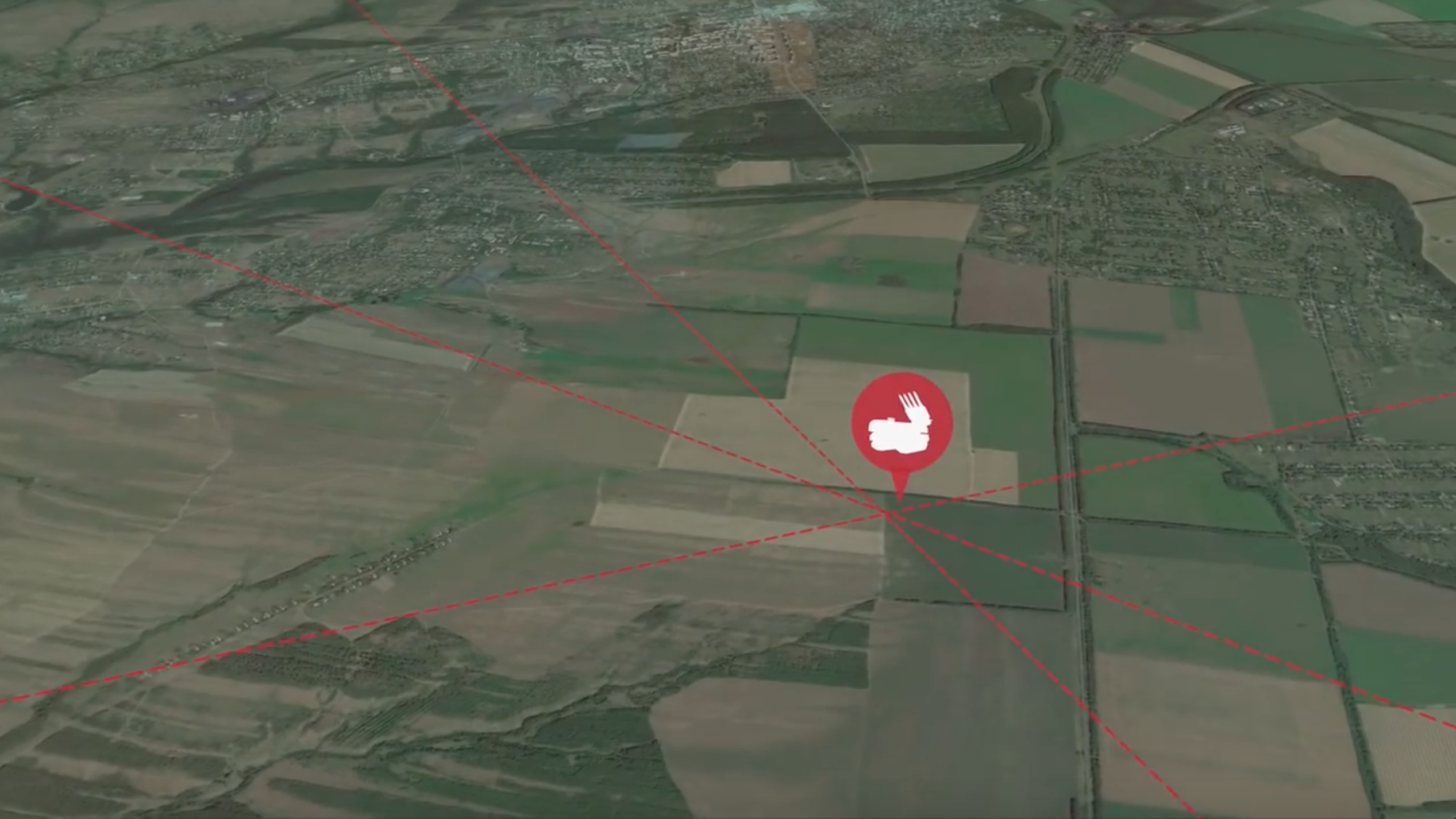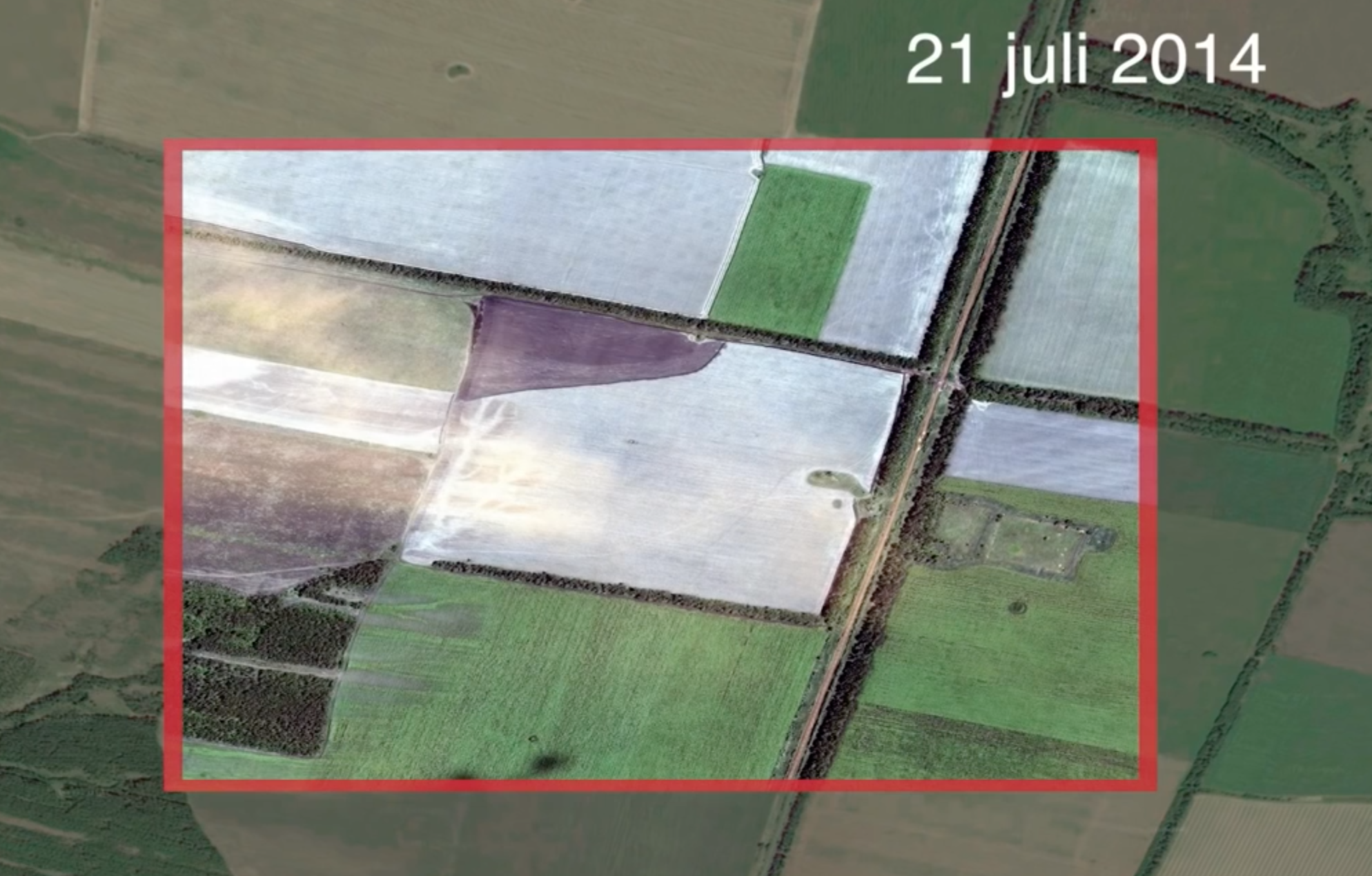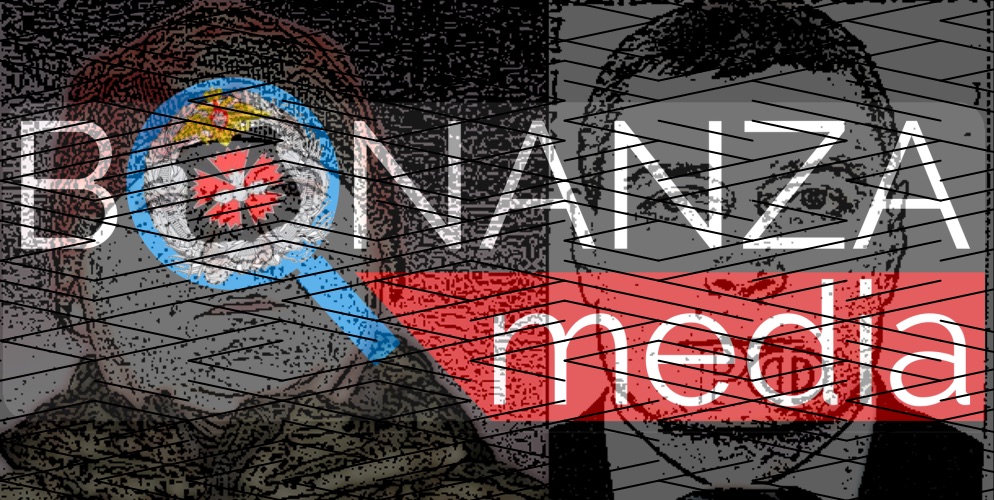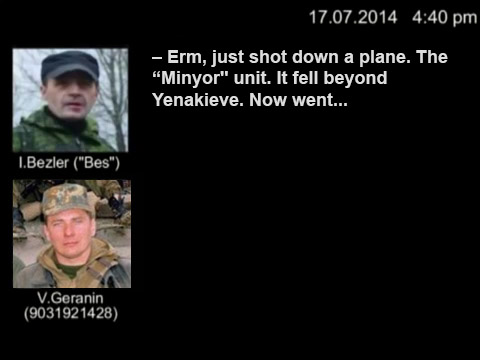Revelations and Confirmations from the MH17 JIT Press Conference
On September 28, the Dutch-led Joint Investigation Team (JIT) held a press conference in which they presented evidence surrounding the downing of Flight MH17. Leading up to the event, the JIT made its intent clear: the weapon type and launch site would be announced, but no blame would be directly assigned. The JIT followed through on its promise, and provided new evidence that corroborates the findings of Bellingcat since its report “Origins of the Separatists’ Buk” in November 2014.
Revelations
New missile trail photograph
Many did not expect the JIT to provide new evidence at this event, but this turned out to be quite incorrect. One of the most significant new materials was a previously undiscovered photograph of the Buk missile’s smoke trail that originated from a field to the south of Snizhne. According to the JIT, this photograph was found on a social network, but it was unclear if it was on Vkontakte, Odnoklassniki, Twitter, or a different site.
The well-known photograph of the missile trail from the day of the tragedy has been analyzed and placed under tremendous scrutiny, but the appearance of a new photograph of the same scene—and at a different angle—further confirms the validity of the smoke plume photograph shared by @WowihaY on July 17, 2014.
свидетель скинул фотку момента пуска ракеты.На горизонте канатная дорога между Лутугина и Цоф #Торез граница #Снежное pic.twitter.com/Z3mBtLjWfa
— ХуТор ??Чистяково (@WowihaY) July 17, 2014
New Photograph of the Buk in Torez
Another new piece of evidence was a photograph of Buk 332 in the town of Torez, taken from the right side of the missile launcher while it was still being hauled by the white Volvo truck. We at Bellingcat have done extensive analysis of the previous photographs and videos of Buk 332, both when it was in Russia and Ukraine; however, the majority of this analysis was of the left side of the Buk. For example, the Paris Match photographs (or, as we now know, video) and the Makiivka video were of the left side of the Buk, while the Luhansk video was of the right side. This photograph from Torez is the first close-up look of the right side of Buk 332 since it was seen in Russia in late June 2014.
Many of the features of Buk 332, as seen in a video in the Russian city of Stary Oskol, clearly appear in the Torez photograph published by the JIT. Clearly, the tear in the side skirt and white marks on the side skirt and cabin are the same in the two scenes. It also appears that, as is typically done to Russian military equipment before or immediately after transit into Ukraine, the cabin number was further obscured. This would be logical, considering the cabin number on the right side of the Buk (a more clearly visible “3×2”) was somewhat obscured before or immediately after transit into Ukraine, as compared to videos from June 23-25, 2014. However, despite these attempts to obscure the origin of the Buk, there are still numerous features unique or rare visible on Buk 332 that can be observed in available photographs and videos.
After the JIT published a censored version of the Torez video, we now are able to confirm that the wheels on the right side of the Buk are the same as those of Buk 332 when it was in Russia.
For more information on the individual features of Buk 332 that have been analyzed, see our previous report “The Lost Digit: Buk 3×2.”
Working with only seven photographs and videos of Buk 332 while it was in Ukraine on July 17-18, Bellingcat was able to make a confident assertion in November 2014 that it was the same Buk that was seen in Russia three weeks earlier. Nearly two years later, every photograph and video that has emerged of the Russian 53rd Anti-Aircraft Missile Brigade’s Buk 332 in Ukraine—including the Makiivka dashcam video, the Paris Match video, and the new Torez photograph—has solidified this identification.
New Paris Match Video
Along with the new photograph from Torez, the JIT published a video that many suspected to exist: a video showing the snapshots published by the French tabloid Paris Match. Many open source investigators suspected that the two snapshots published by Paris Match were screenshots from a video due to the video artifacts and resolution. This assertion was confirmed with a brief video showing a car driving by Buk 332 on the Volvo truck, along with three vehicles in the accompanying convoy—a Volkswagen minivan, UAZ-469 jeep, and 2010 Toyota RAV4.
Обнародовано новое видео с российским «Буком» на Макеевском Шоссе в Донецке, на котором также видны сопровождавшие его машины сепаратистов. pic.twitter.com/OdAxSiuYlz
— CIT (@CITeam_ru) September 28, 2016
With this video, we now have full-resolution versions of the two Paris Match snapshots.
There has been seemingly endless digital ink spilled regarding the Paris Match photographs, so there is no need to analyze them further here. This new video did not provide many new details, but the nearby convoy vehicles (the RAV4 was previously identified) further confirms the makeup of the convoy that travelled with Buk 332 on July 17. These three vehicles were seen two days prior, on July 15, escorting a number of military vehicles from Luhansk to Donetsk.
Cars visible in the new MH17 video published today by JIT match separatist cars previously ID'd by Bellingcat: https://t.co/9NH7LXAFoi pic.twitter.com/MZQ38v5BSC
— CIT (en) (@CITeam_en) September 28, 2016
New Intercepted Phone Conversations
Along with additional visual materials, the JIT published previously unheard intercepted phone conversations between separatists. One of these calls comes from July 16, before Buk 332 was transported across the Ukrainian border near the town of Donetsk, Russia (not to be confused with Donetsk, Ukraine).
A later, previously unheard call came in the early afternoon of July 17, with a driver in the Buk convoy (or perhaps Volvo truck) unclear about directions.
It seems that the driver was unfamiliar with the area, and even with the town of Snizhne—one of the larger cities in the area. Judging by his reaction regarding “this fucking what’s it…this fucking Snizhne,” it is fair to assume he is not a local.
Another call came on the same day as a press conference from Russian Buk missile manufacturer, Almaz-Antey. In this call, two separatists discuss the “revelation” made by Almaz-Antey regarding the alternative launch site near Zaroshchenske. While Almaz-Antey and the Russian Ministry of Defense claims that this town and the surrounding area was controlled by the Ukrainian army on July 17, these two separatists do not agree, and clearly indicate that the town was not under Ukrainian control, and that there was no launch at that location.
The Entry and Escape Routes
Lastly, the JIT provided information on the route of the Buk when it came from and returned to Russia. The exact routes have long been unclear—the Buk was first photographed in Donetsk on the morning of July 17, and last while moving through Luhansk in the early morning of July 18. We now know that the Buk travelled through Yenakiieve on its way to Donetsk–the same route taken by a separatist convoy two days prior, with the same accompanying convoy vehicles. Many have questioned why the Buk was transported over a route that took much more distance than alternatives closer to the border. The answer to this concern is simple: this same route was clearly used by separatists linked to Igor “Strelkov” Girkin and the Donetsk People’s Republic (DNR) two days prior to the downing of MH17, with the same convoy vehicles. Whatever their reason was, there is clear evidence that it was used at the time by the same group that provided cover to two convoys between Luhansk and Donetsk.
Through their investigation, the JIT also determined that the Buk took a meandering route back to Russia, moving through Krasny Luch, Debaltseve, and then finally through Luhansk.
The reason for this route is not immediately clear, but is likely due to increased security measures and an intent to only travel through checkpoints and paths that the drivers knew would be secure at the time.
Confirmations
The Buk
While many of the revelations of the September 28 press conference confirmed previous claims made on this site and from other open source investigators, the bulk of the presentation confirmed the most significant claims of the November 2014 report “Origin of the Separatists’ Buk” and subsequent reports.
Most importantly, the JIT confirmed that a Russian-made Buk missile was responsible for the downing of MH17.
The missile type was also discussed, though the JIT did not elaborate on the exact type of missile—describing it as just a 9M38, instead of specifying 9M38M1. In one photograph in the presentation, the digits after “9M38” are blurred, showing the reticence (either due to political or investigative reasons) of the JIT to make further specifications on the missile type at this time. It is also possible that the photograph used was not perfectly representative of the missile used to down MH17.
Furthermore, by showing Buk 332 in a variety of photographs and videos, the JIT also specified the exact missile launcher that is suspected of shooting down MH17.
The Route
The route and chronology of the route of Buk 332 is roughly the same as that laid out by Bellingcat in its previous reports: the Buk arrived from Russia on July 17, travelled through Luhansk before arriving in Donetsk, then went through Makiivka, Zuhres, Torez, and Snizhne before launching the missile.
The Launch Site
The launch site specified by the JIT is the same described by Bellingcat in January 2015. This same launch site was previously geolocated and confirmed by blogger Ukraine@War in July 2014, with assistance from @WowihaY. The launch site was also visited by journalists Christopher Miller and Roland Oliphant shortly after the downing.
You can see the site of the launch on Google Maps here. By visiting this same location on Google Earth, you can see the changes in the field over time, including satellite images from the day before the tragedy (July 16), and four days after (July 21).
Zaroshchenske Debunked
Bellingcat has published two major investigations into the claim that Zaroshchenske was a viable launch location, and that it was under Ukrainian control:
- Zaroshchens’ke Launch Site: Claims and Reality – A Bellingcat Investigation
- Zaroshchens’ke Revisited: Almaz-Antey’s New Launch Areas
As confirmed in the intercepted call and the investigation of the JIT, the two Bellingcat reports describe how there was not a missile launch near Zaroshchenske on July 17, and that the area was not under Ukrainian control.
Major Bellingcat Investigations into the Downing of MH17
MH17 – The Open Source Investigation, Two Years Later
Origin of the Separatists’ Buk
Potential Suspects and Witnesses from the 53rd Anti-Aircraft Missile Brigade
Is this the Launch Site of the Missile that Shot Down Flight MH17?
MH17 In Their Own Words: Witness Testimonies on Social Media from July 17, 2014
Separatist Convoy Linked to MH17 Buk Transport
Tracking the Vehicle that Transported the MH17 Buk
Zaroshchens’ke Launch Site: Claims and Reality
Zaroshchens’ke Revisited: Almaz-Antey’s New Launch Areas
Forensic Analysis of Satellite Images Released by the Russian Ministry of Defense
